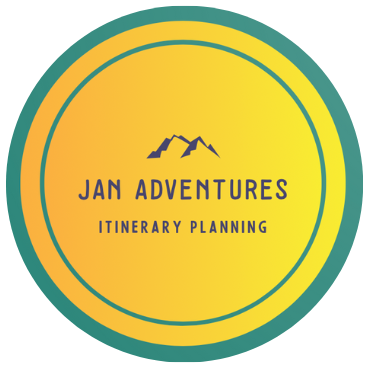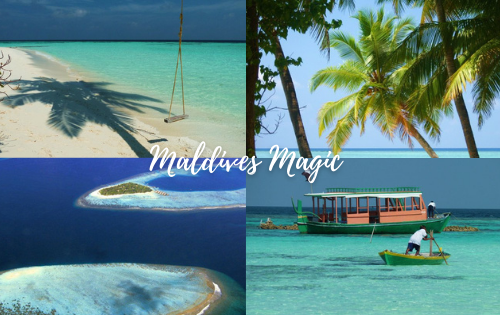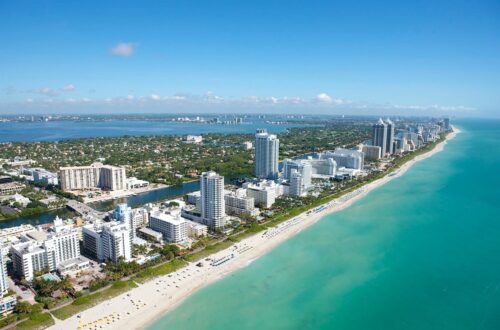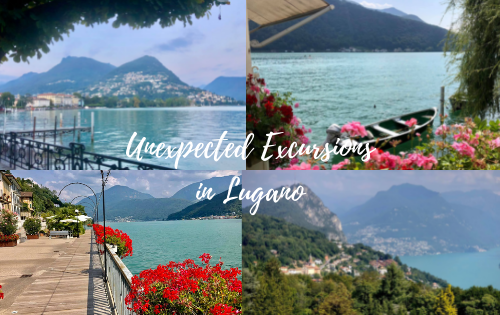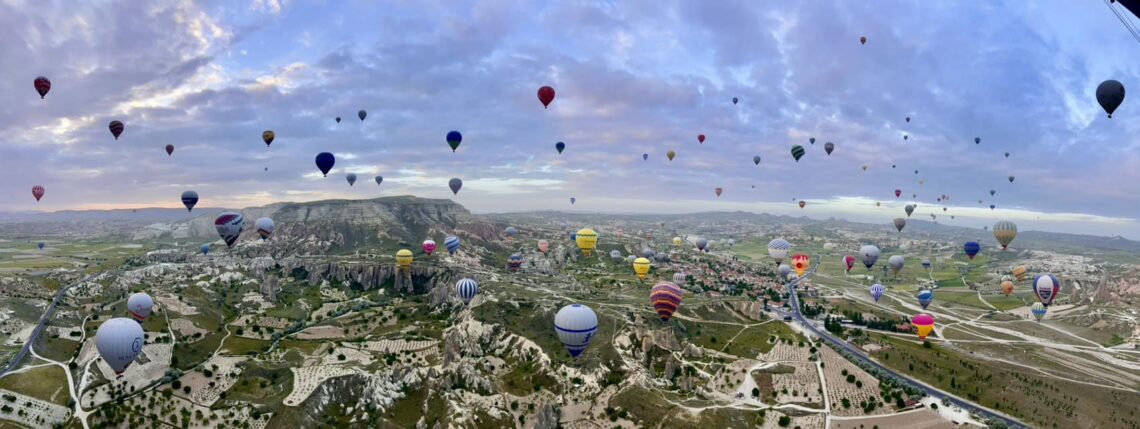
Cappadocia Turkey Itinerary
One of my best trips this year was to Turkey, including a visit to the Cappadocia region. I was amazed at the scenery in this part of Turkey. In this detailed post, I will share with you the perfect Cappadocia Turkey Itinerary!

Overview
For our trip to Turkey, we booked an organized tour through a Swiss tour agency, Nettours. I had used this company before so I was confident it would be good. As the company is Swiss, the tours are only offered in French and German languages. After living in the French part of Switzerland for many years, I am able to understand French-speaking tour guides. We went with another couple from where we live, which made the trip even more enjoyable.
Our organized tour had the below itinerary. We chose the extension option to spend additional days on the coast near Belek. It was the perfect way to top off our Turkey trip by relaxing on the beach.
- 1st day / Arrival to Antalya
- 2nd day / Antalya – Konya – Cappadocia
- 3rd day / Cappadocia
- 4th day / Cappadocia – Sille – Antalya
- 5th day / Antalya – Turkish Riviera (Belek)
- 6th and 7th days / Turkish Riviera (Belek)
- 8th day / Departure from Antalya
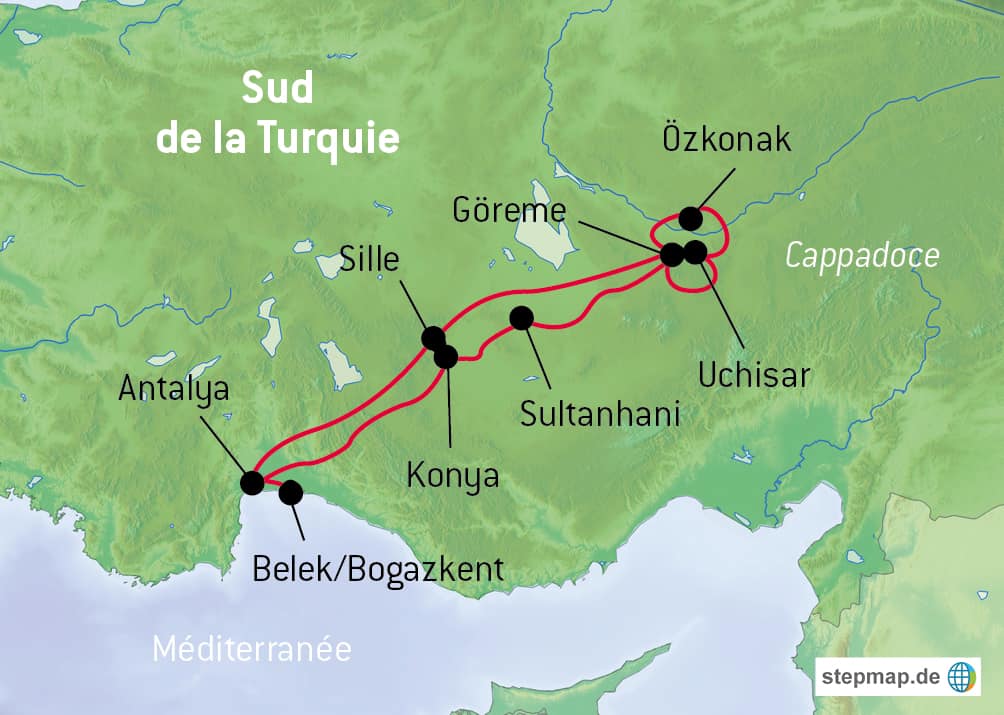
The nice part about the trips offered by Nettours is that all flights, local transportation, accommodations, and food are included in the tour and the price. I find the cost of these tours much lower than those offered by other companies. The tour guides are always local and knowledgable about the region.
After a long day departing from Geneva, Switzerland, we arrived to Antalya late at night. Our tour would officially start on Day 2.
2nd day / Antalya – Konya – Cappadocia
Taurus Mountains
We left Antalya in the early morning of our second day for a long 6-hour bus ride across the Taurus Mountains of Turkey. I was quite surprised to see the varied terrain and beautiful landscape. I had always imagined Turkey to be dry and barren, but this region had lots of trees and green scenery.
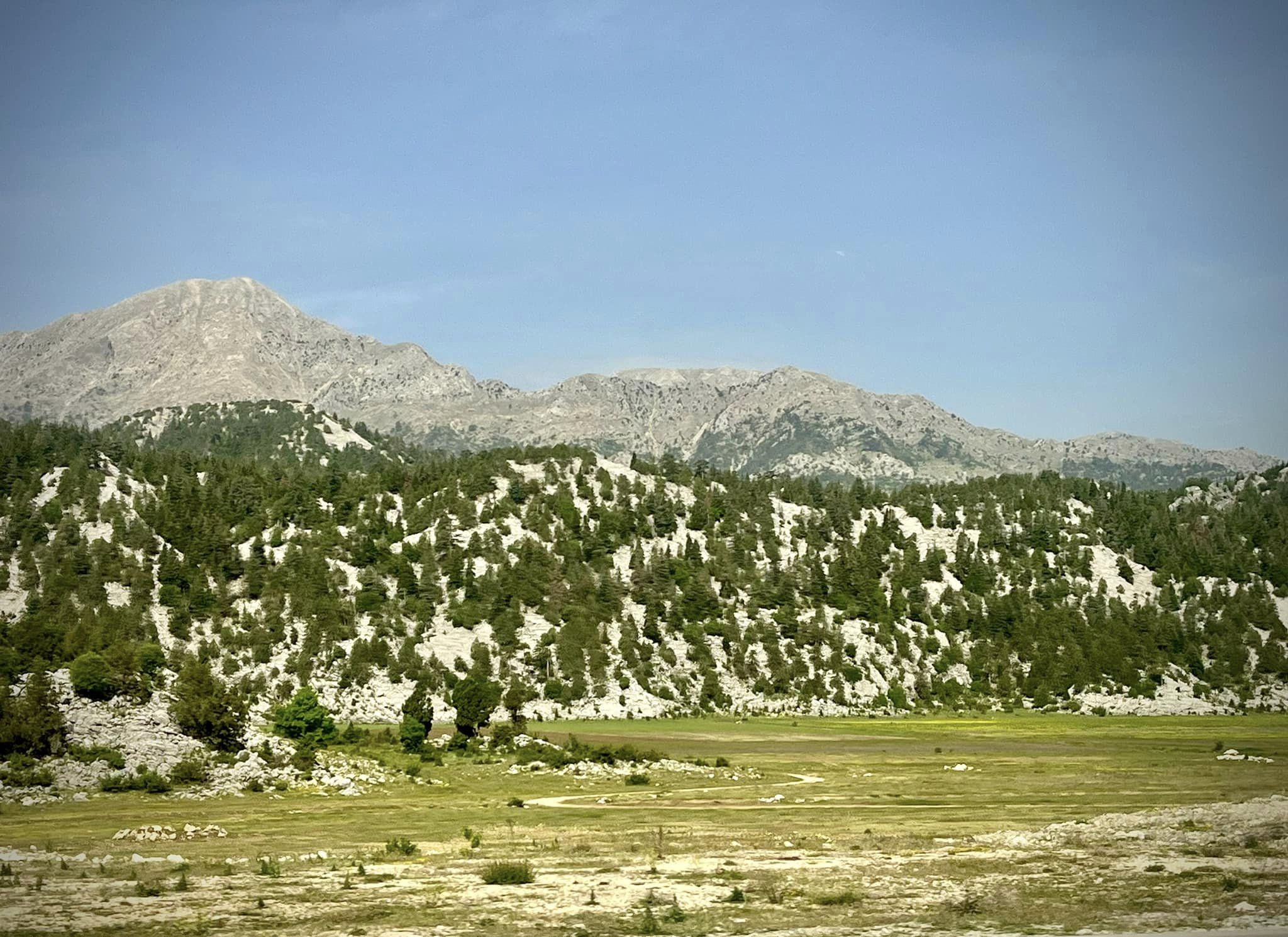
The Taurus Mountains are located in Turkey’s Mediterranean region and stretch parallel to the coast for approximately 560 kilometers (348 miles). These mountains serve as a border separating the Central Anatolia Region and Mediterranean Region, two of the seven regions of Turkey.
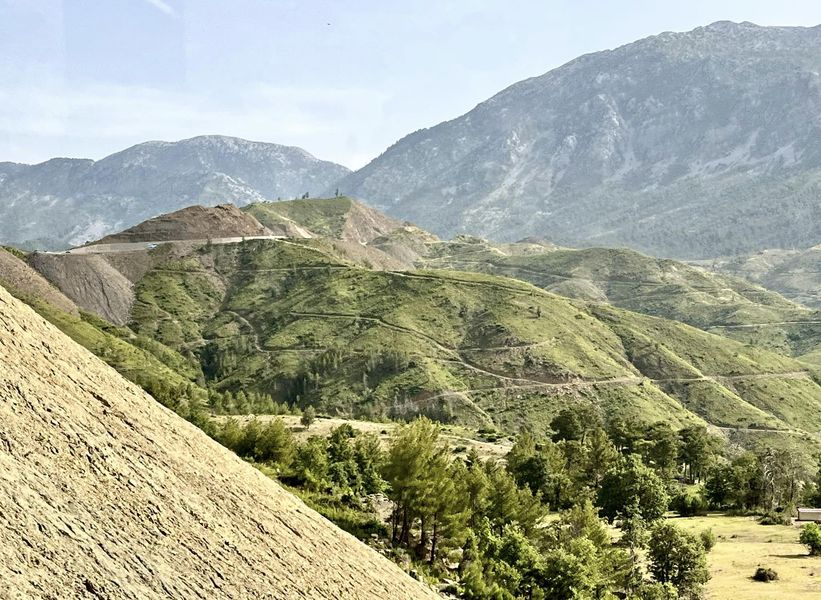
Because the ride across to Cappadocia is so long, we had a few stops along the way. We were served a nice lunch and had the opportunity to taste the local Turkish coffee.
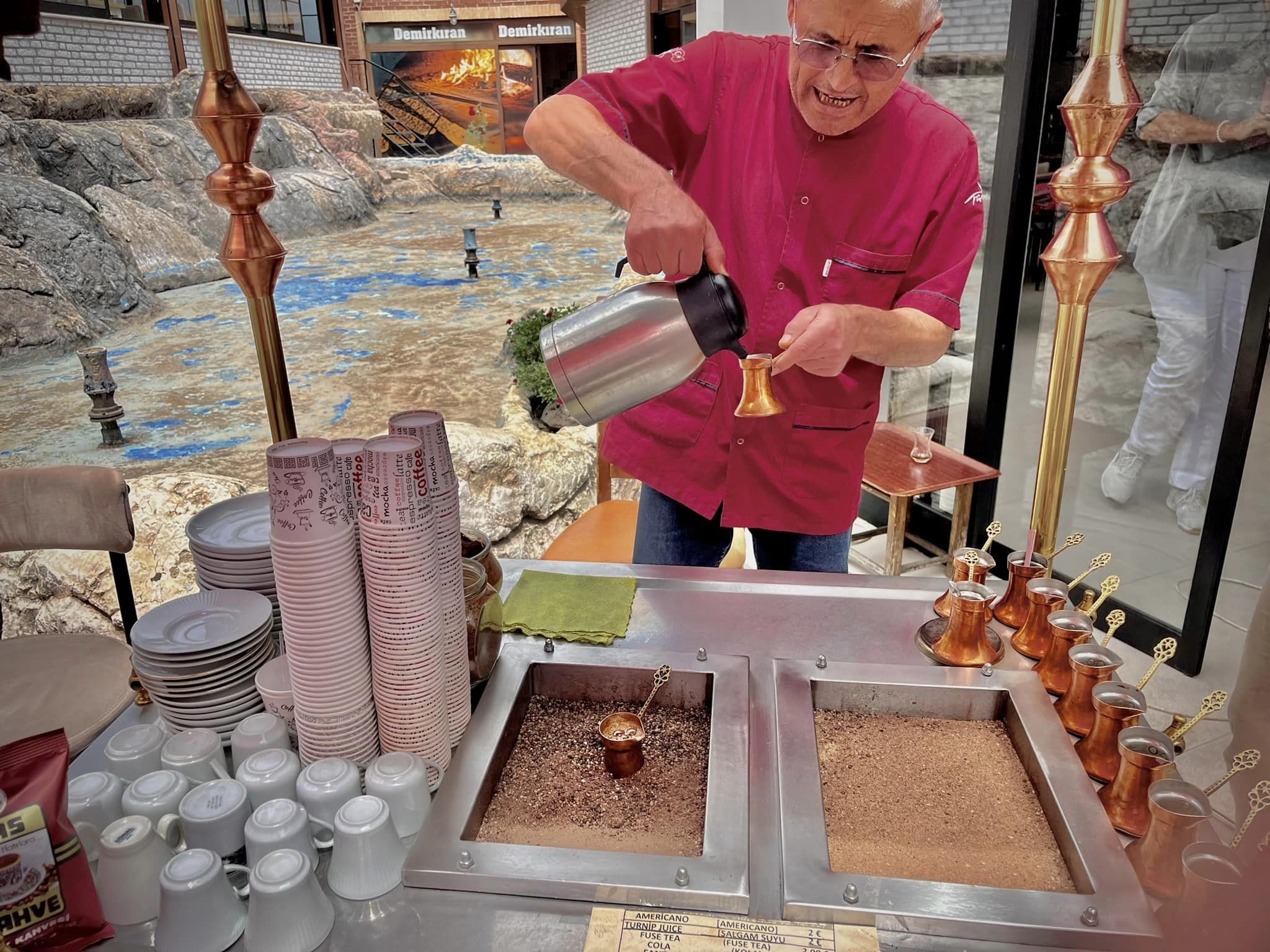
Turkish coffee is a historic and celebrated brewing method, deeply rooted in Turkey’s cultural heritage. Originating in the 16th century during the Ottoman Empire, it is the world’s oldest coffee brewing method. The uniqueness of this coffee is not in the type of bean used, but in its distinctive brewing technique. The preparation of traditional Turkish coffee starts with combining finely ground coffee and water in a ‘cezve.’ This small pot, traditionally made of copper, is essential for the process.
In case you are from Dubai, you can apply here about getting a Turkey Tourist visa.
Konya
One of our stops during the day was in Konya, the capital and cultural center of the ancient Seljuk Empire on the historic Silk Road. The region around Konya is one of the oldest habitation areas of humanity.
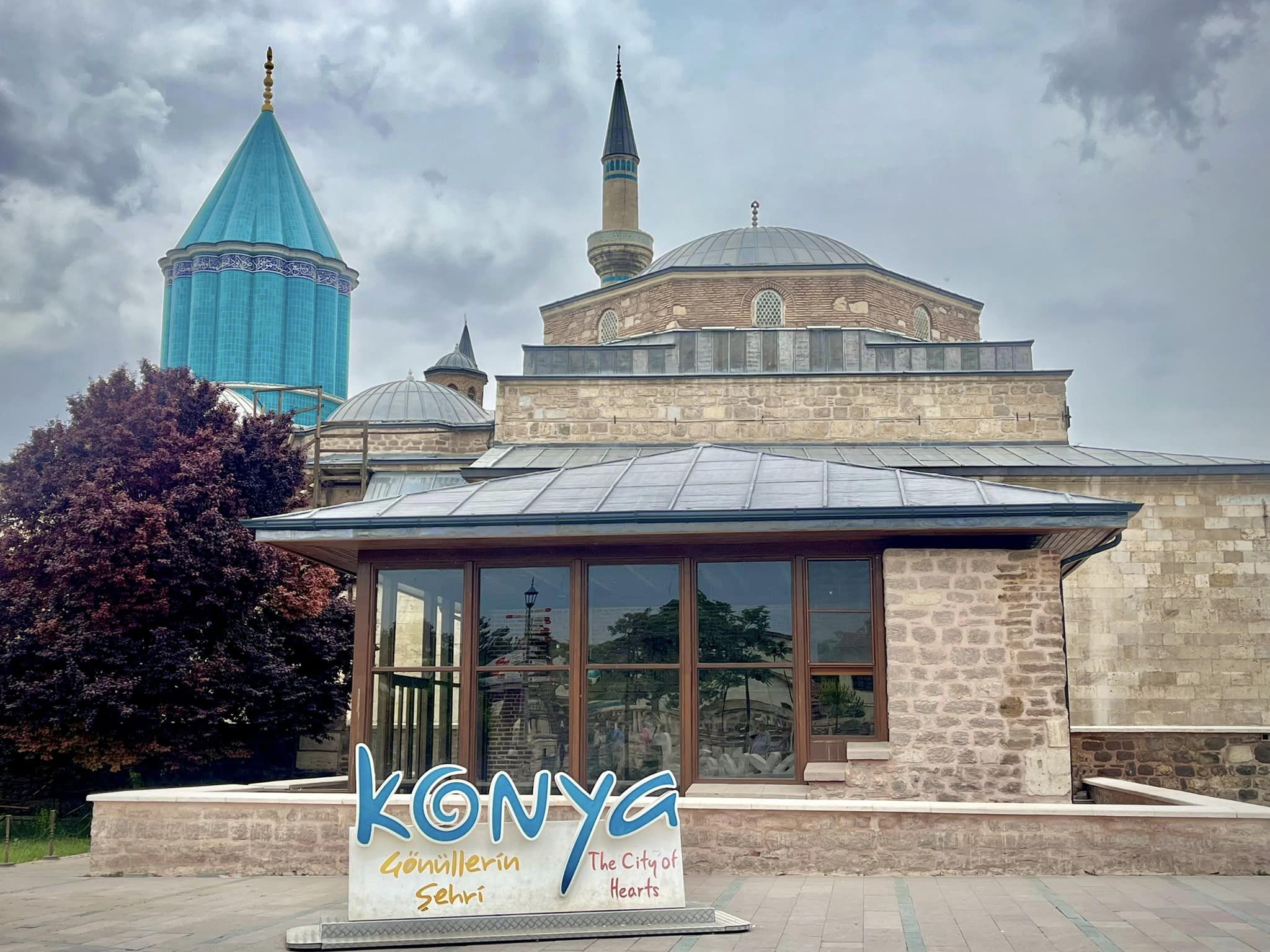
Konya is probably best known as the final resting place of 13th-century philosopher, poet, and religious leader Mevlana Celaleddin Rumi. As well as being a renowned Islamic scholar, Rumi launched the Mevlevi Order of the Whirling Dervishes.
The dervishes, who offer worship in the form of spinning dances that kick out their elegant robes as they move gracefully across the floor, are still going strong. And while they can be seen in various locations across Turkey, Konya is the beating heart of their activities. We actually saw one of these dance shows when we were in Cappadocia.
Mevlana Monastery
We visited the famous Mevlana Monastery, the highlight of Konya and an important place of pilgrimage dedicated to Mevlana Celaleddin Rumi. Rumi may not be very well known in the western world, but the Islamic world greatly appreciates and cherishes his spiritual legacy. In terms of poems and his other literary work, he is comparable to Dante and Shakespeare.
Rumi died in December 1273. Hüsamettin Çelebi, Mevlana’s successor, decided to build a mausoleum over his master’s grave in 1274.
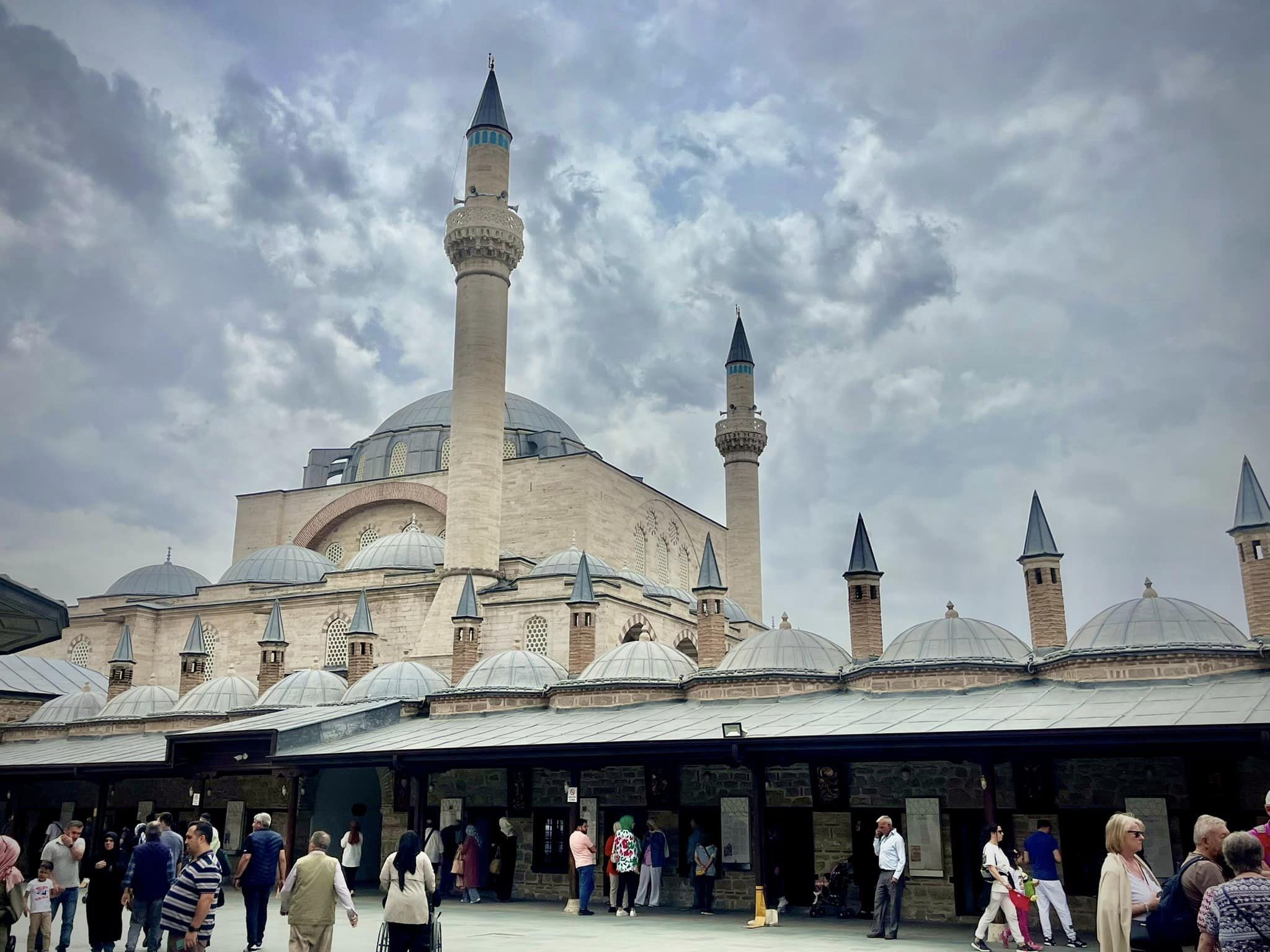
This is Turkey’s most visited museum, with over 2.5 million visitors annually. The large complex houses a huge collection of artifacts belonging to the Mevlana Order including valuable carpets, metal and wooden objects, and books. I found the interior to be very ornate and beautiful. We had some free time here to visit the gardens and buildings.
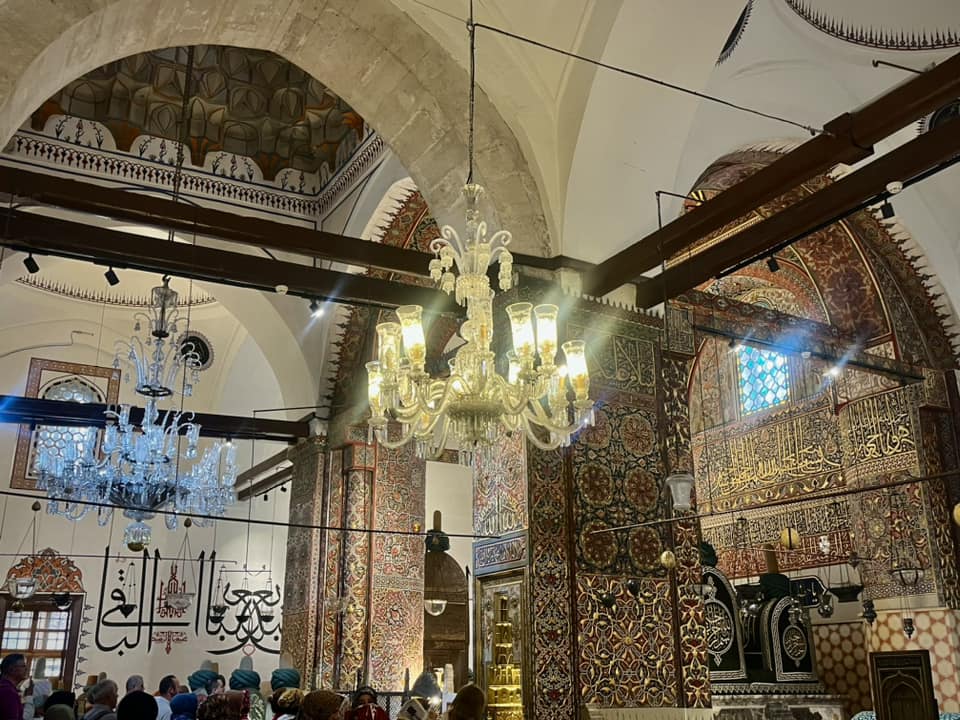
Sultanhani Caravanserai
Our next stop was in Sultanhani, a small town between Konya and Aksaray on the ancient Silk Road. Here we visited the largest and best preserved Seljuk caravanserais (Middle Ages inn) in Turkey.
The first important caravanserais were built by the Seljuks at the end of the 10th century. In the 13th century, the caravanserai network was also extended in central Anatolia by constructing such a service area, approximately every 30 to 50 kilometers. This was the distance a caravan could travel in a day at that time.
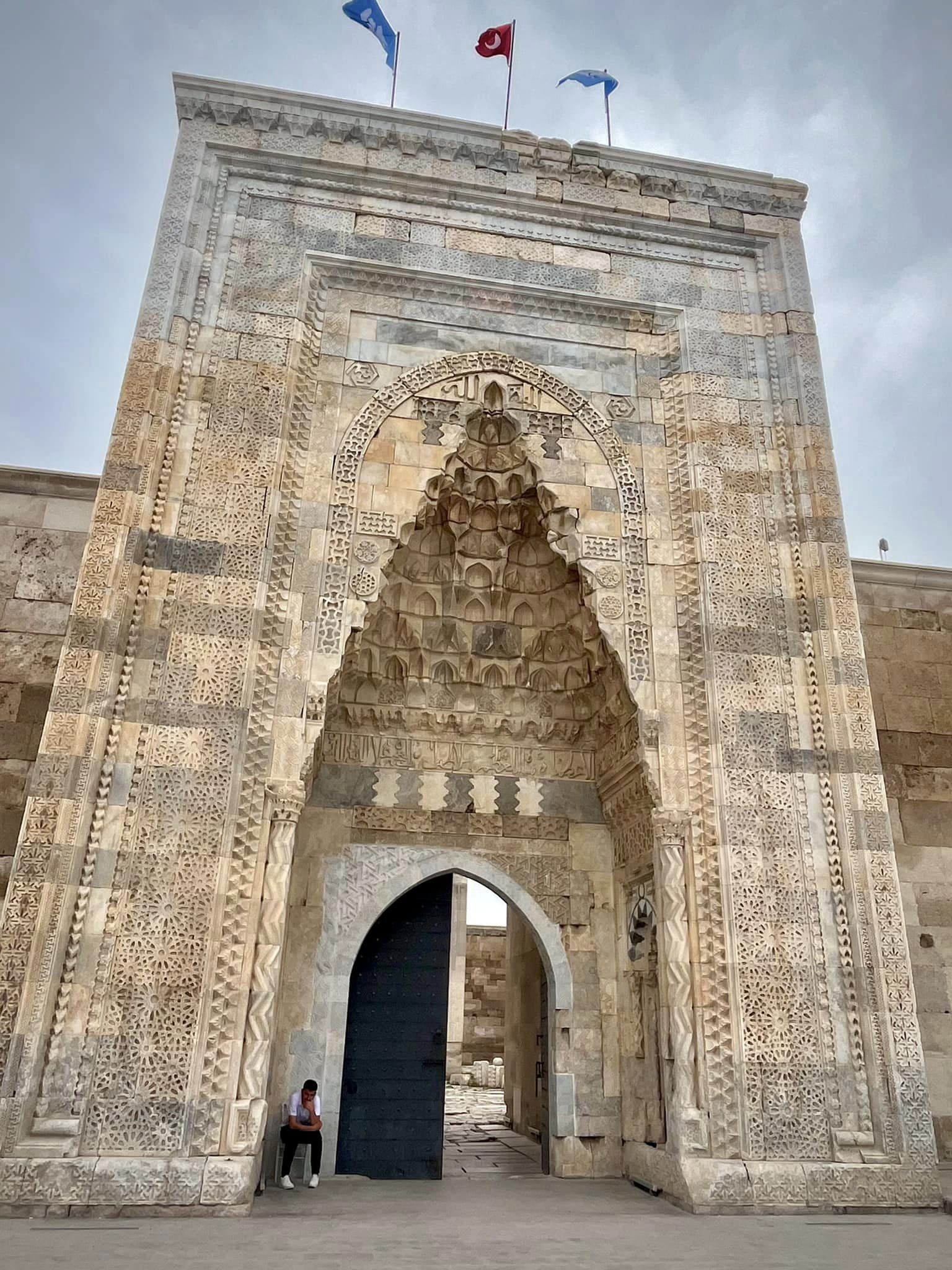
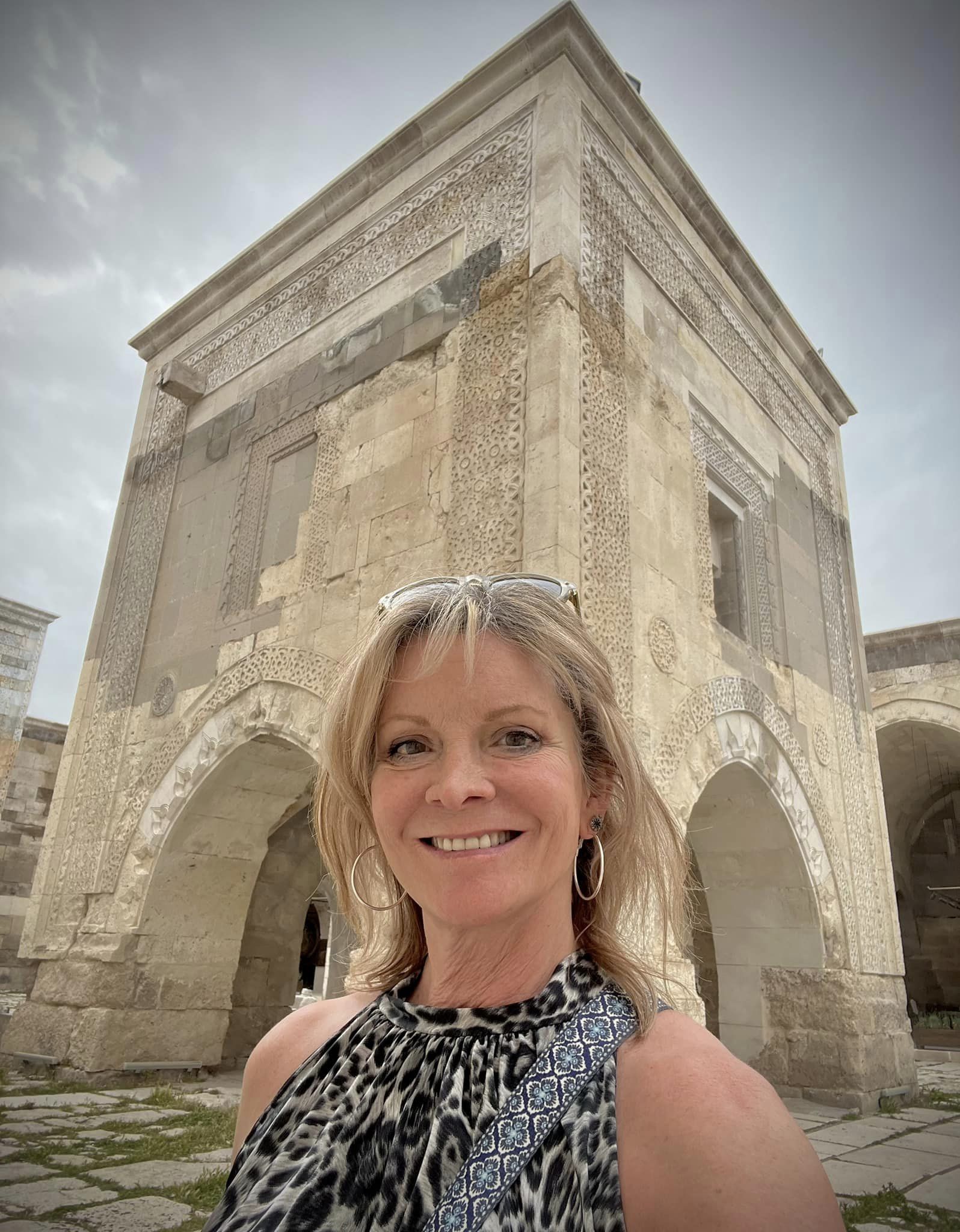
This monumental edifice was built to protect merchants traveling along the ancient Silk Route. Travelers of the time found accommodation, meals, washing facilities, medical care and protection against bands of bandits.
Cappadocia
Upon arriving to the Cappadocia region after the long drive from Antalya, I was immediately astonished at the scenery. Visiting this area is like being on another planet. The landforms are so unique that it’s hard to believe they really exist until you see them with your own eyes.
The Cappadocia region was formed 60 million years ago by erosion of soft layers of lava and ash from Mount Erciyes (Argeus), Mount Hasan and Mount Güllü combined with wind and rain over millions of years. Human settlement at the Cappadocia region dates back to the Paleolithic era. The Hittites were followed by the Phrygians, who established a kingdom in the region in the 8th century BC. The Phrygians are known for their impressive rock-cut tombs and temples.
Uchisar Castle
Our tour guide suggested a short stop before we arrived to our hotel for the next two nights. We visited the Uchisar Castle, which was no less than spectacular. The Uchisar Castle is in the small town of Uchisar, close to Goreme where we stayed.
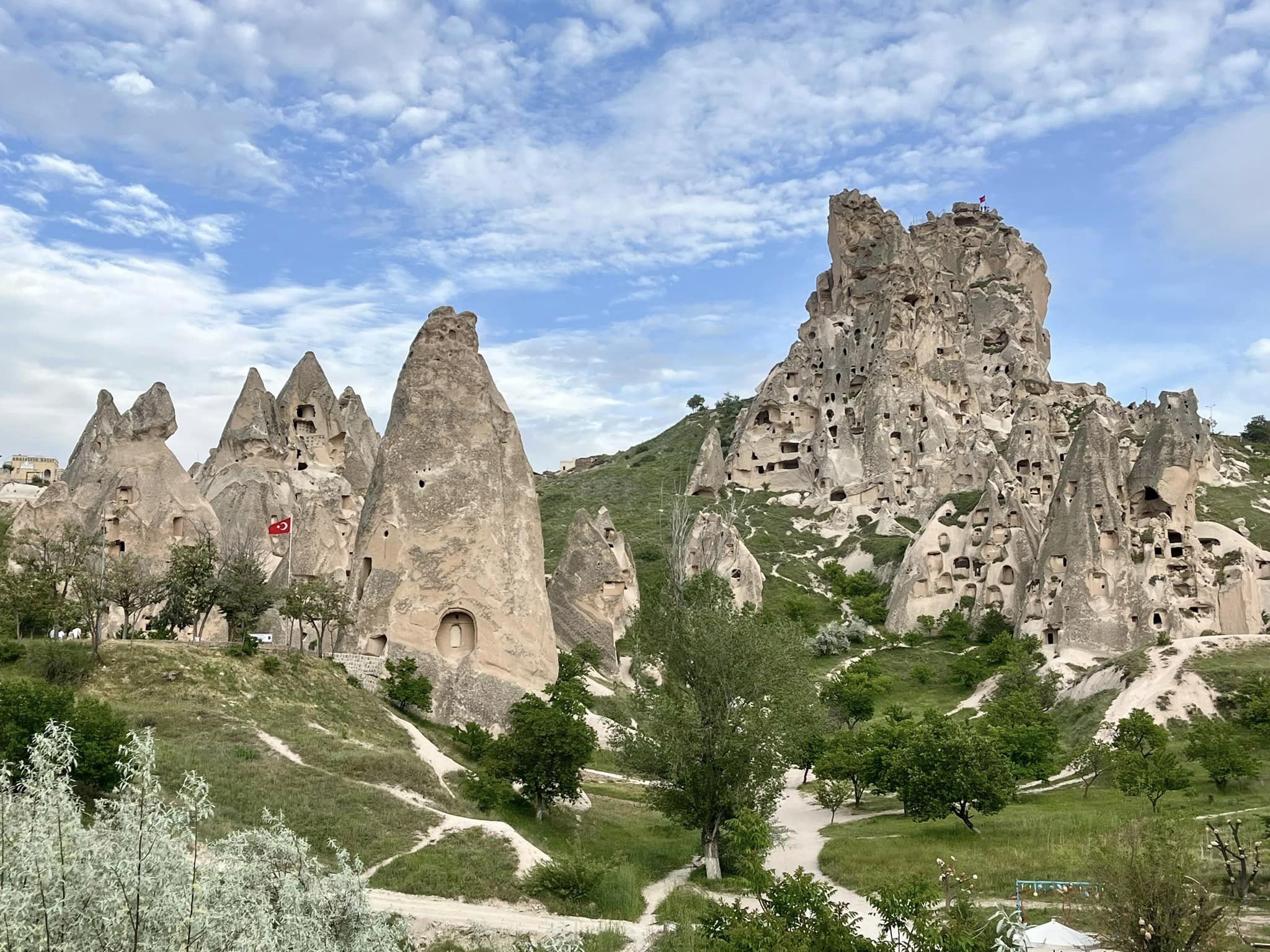
Uchisar Castle is the highest point in Cappadocia and has a unique composition that made it a natural fortress. Originally admired for its fairy chimney shape, the castle was later adapted to serve as an early warning system against attacks from higher ground during the Roman, Byzantine, and Ottoman periods.
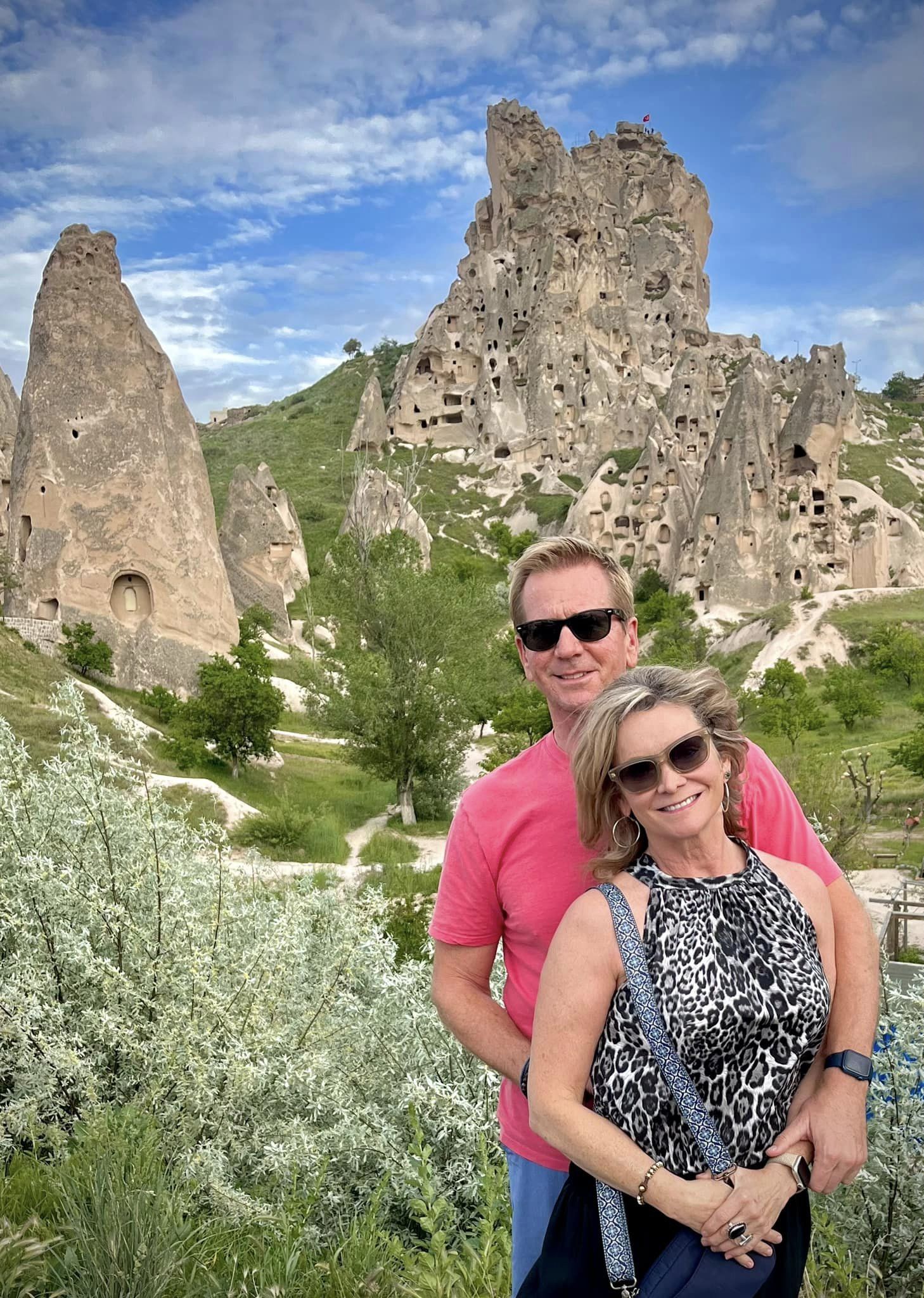
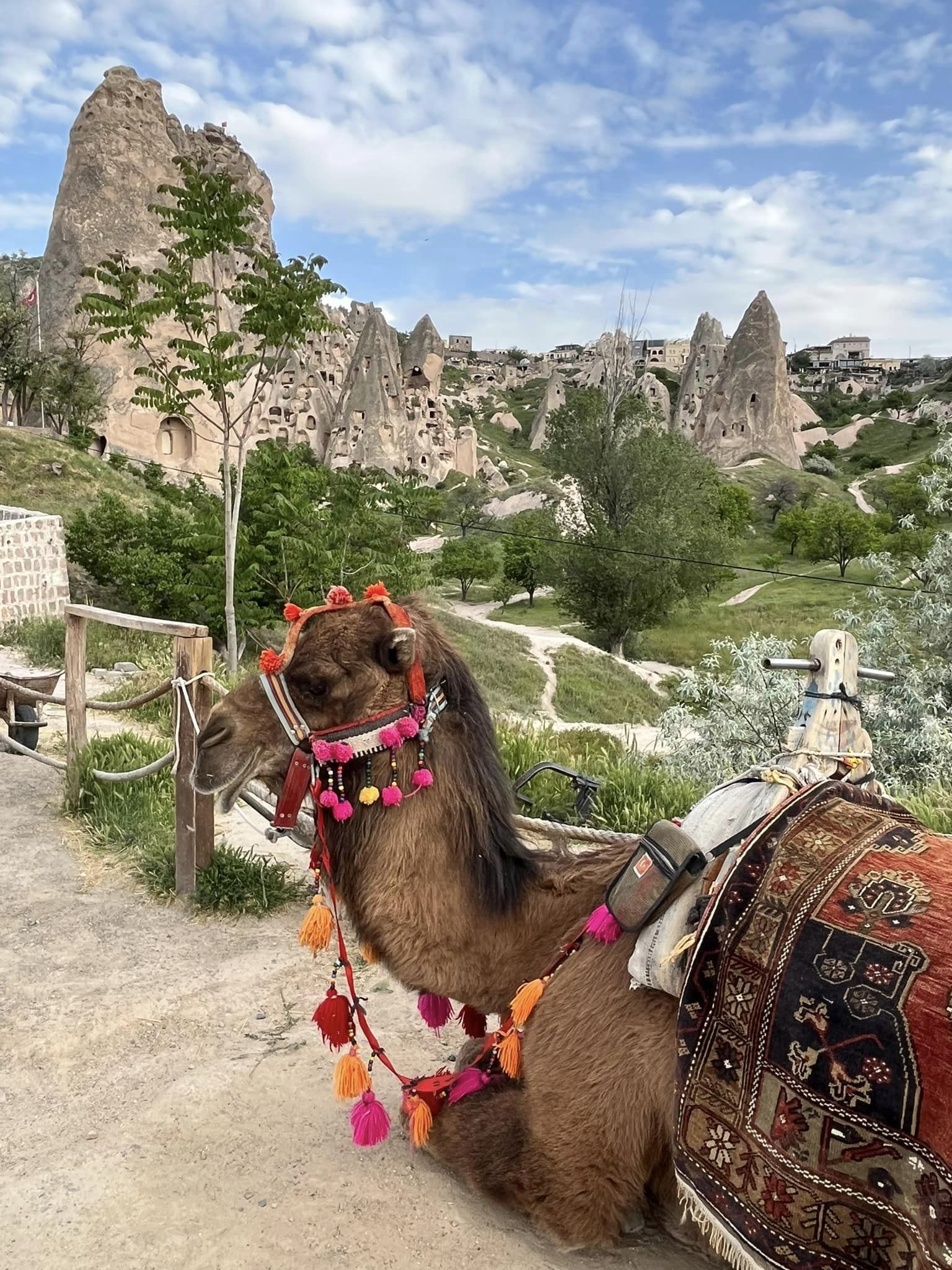
I couldn’t get over the unusual appearance of the castle’s eroded walls and honeycomb structure of tunnels and cavities. The structure was entirely carved out of a coniform rock composed of volcanic tuff. Inside of the 95-meter high rock, there are rooms which served as living quarters, storehouses, kitchens, and stables.
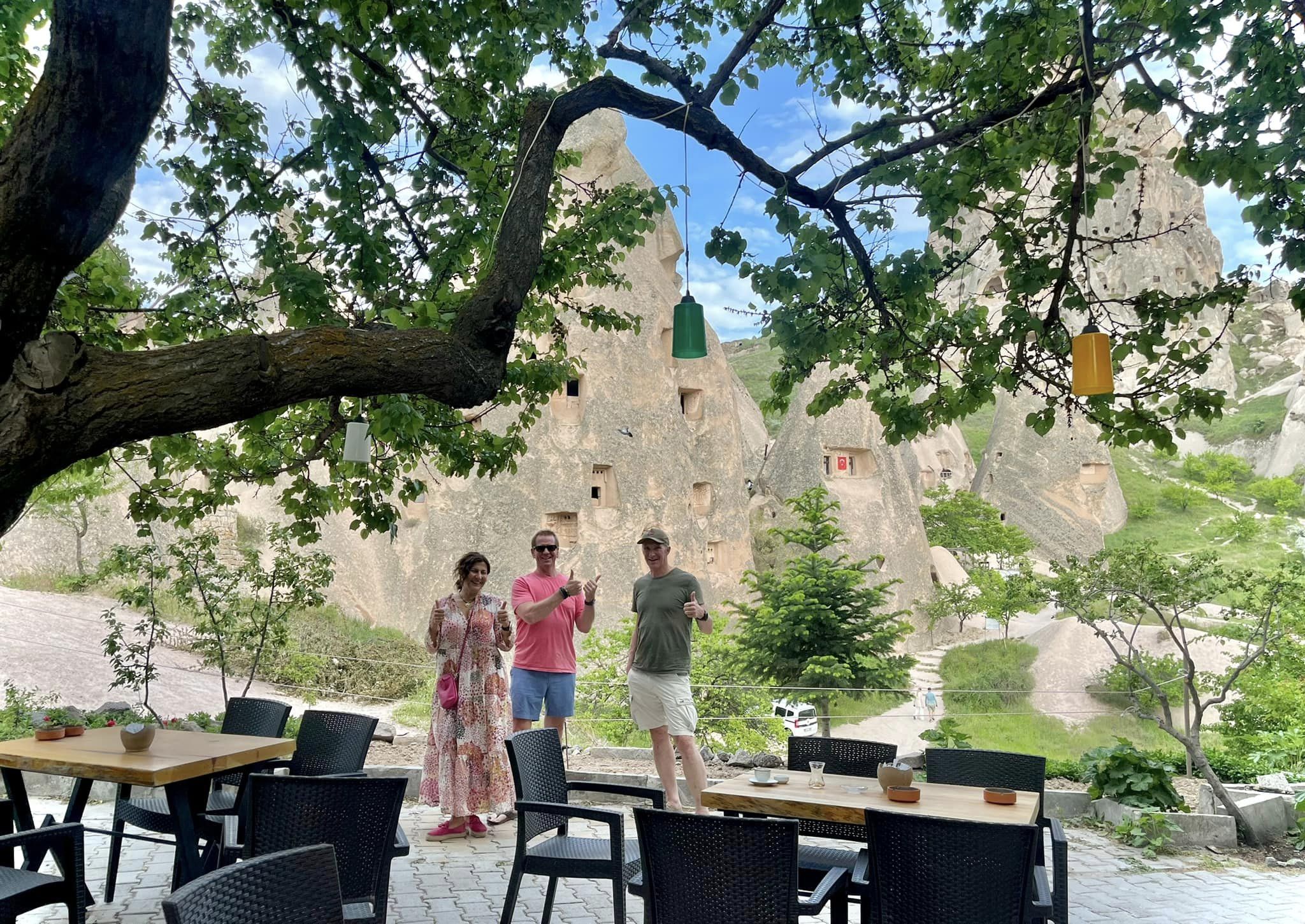
Uchisar Castle was built by Byzantine settlers in the 4th century AD. In the late 11th century it was used by the Seljuks. We walked around the area but didn’t have time to climb to the top of the castle where the flag is placed.
3rd day / Cappadocia
Hot Air Balloon Ride over Cappadocia
One of the optional activities on our tour (which we had to pay for) was a hot air balloon ride. I have to say it was one of the most amazing experiences I’ve had in my life! I’ve been in a hot air balloon in Switzerland, but this was exceptional because there were 150 other balloons in the air at the same time. We had to wake up at 3:30am for the 5am sunrise launch but it was so worth it!
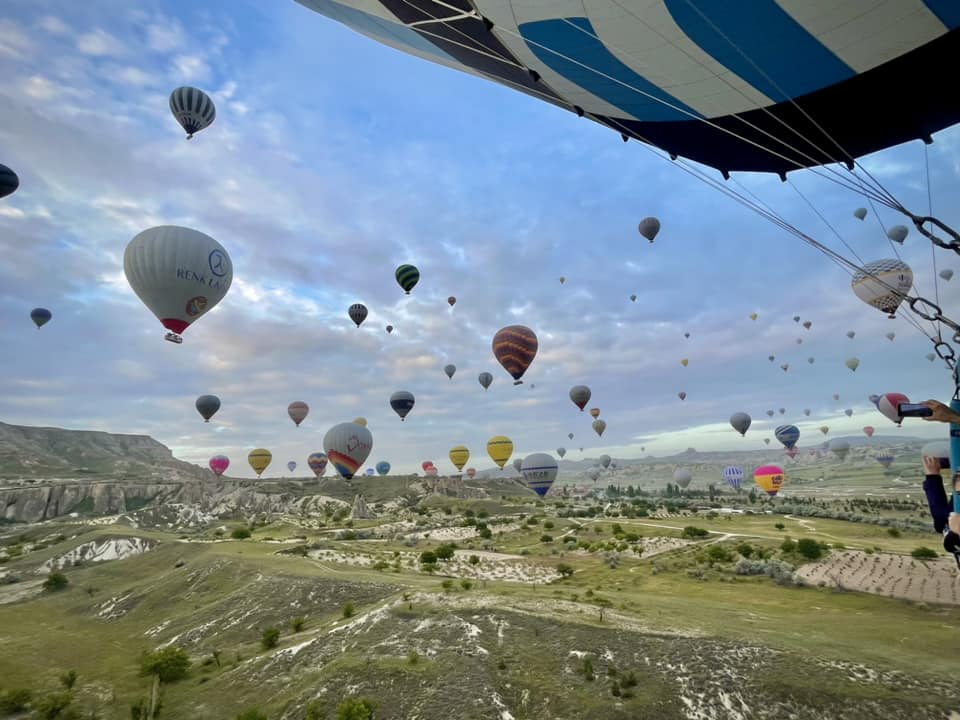
The launching of hot air balloons in Cappadocia is a daily event year round, weather permitting. If there is too much wind, they won’t fly. We were hoping for ideal conditions as we only had one day to do the ride.
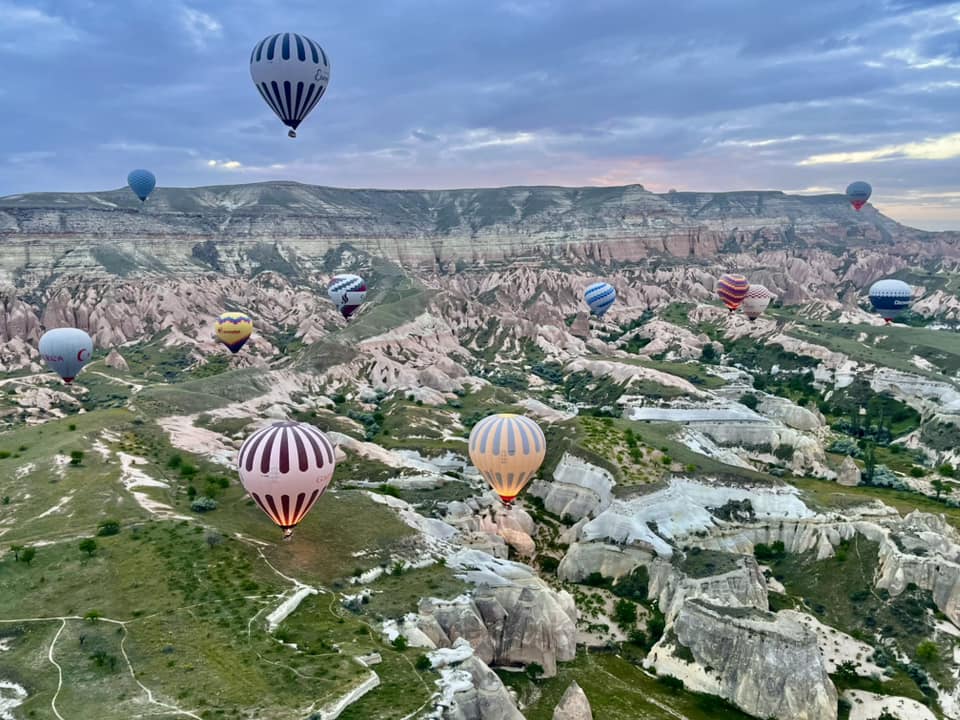
We were driven almost an hour from our hotel to the launching spot. It was still dark at 5am and we couldn’t see anything except for a few balloons being blown up.
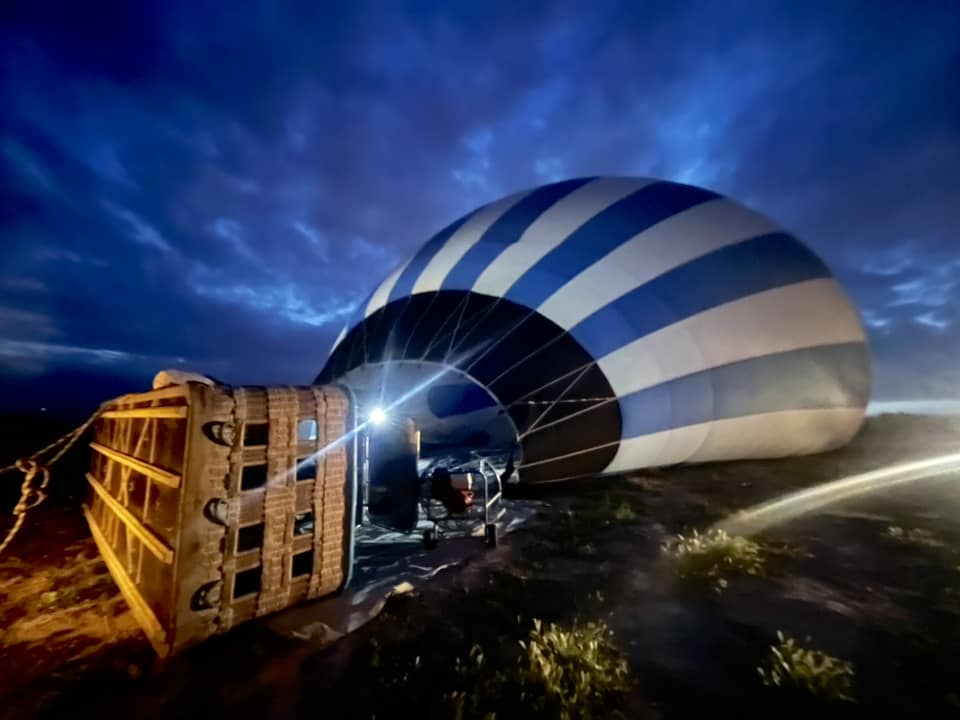
We were quickly instructed to get into the balloon basket. There were four different sections of the large balloon basket. Each section could hold 4 to 6 people. We were about 24 people total on our balloon.
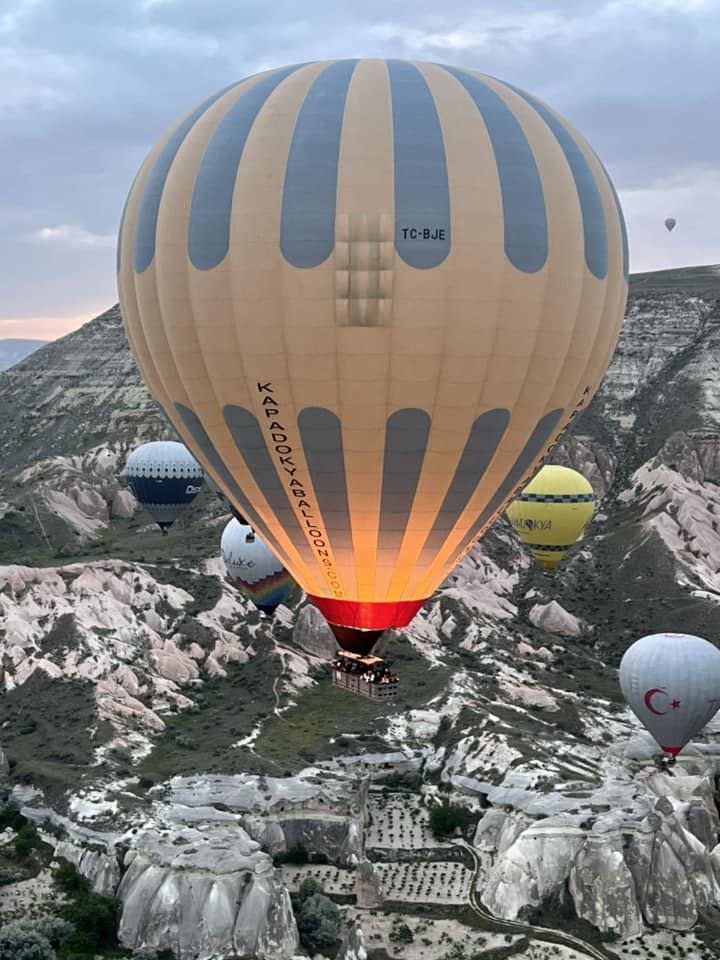
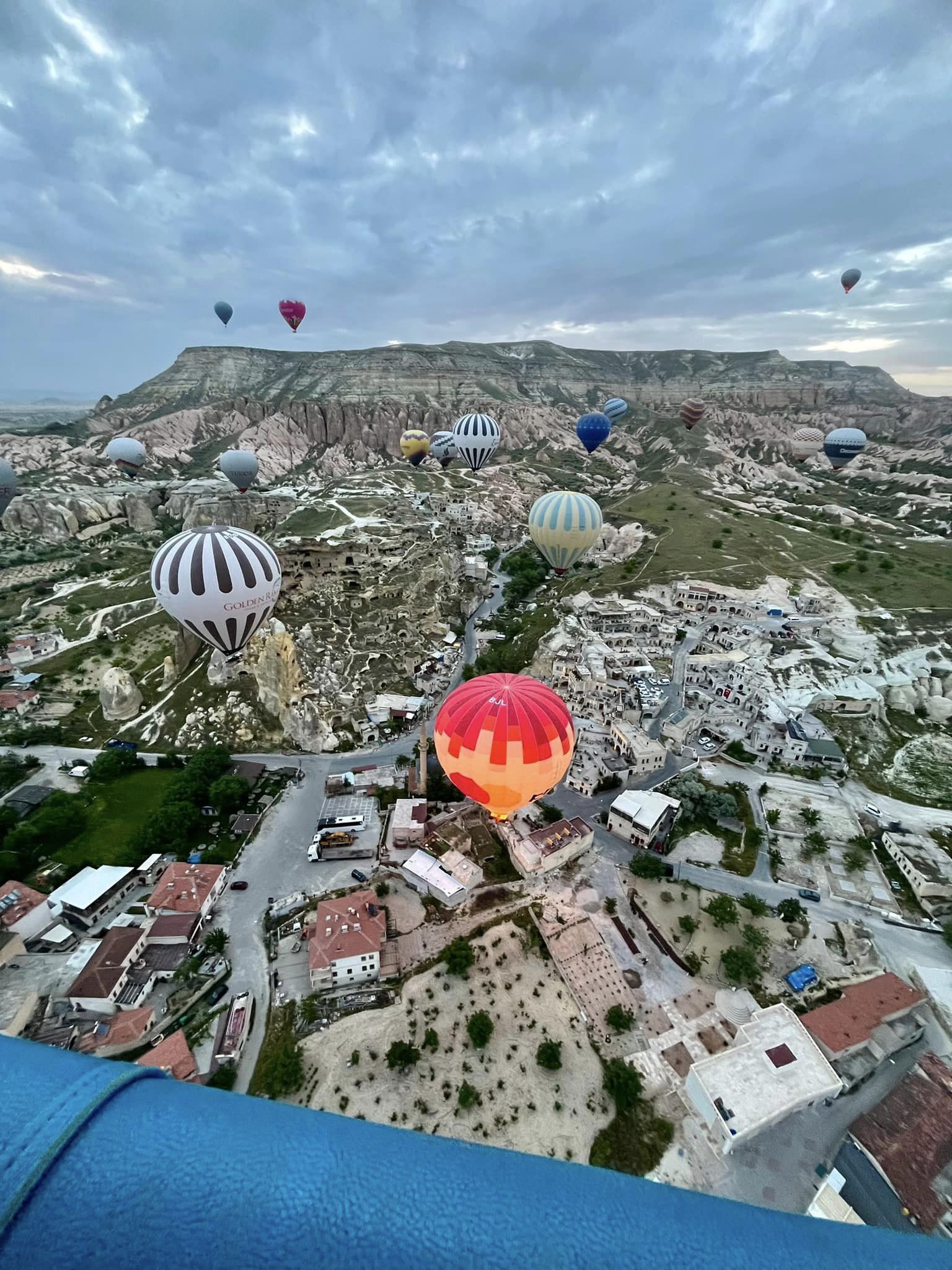
The balloon started to lift and the sun was rising making it brighter to see our surroundings. All of a sudden, we saw many hot air balloons all around us! The ride lasted an hour and as time passed, there were more and more balloons in the air.
It was a bit cloudy on this day so the sunrise wasn’t spectacular. However, the ride across the Cappadocia unique landscape was well worth the experience.
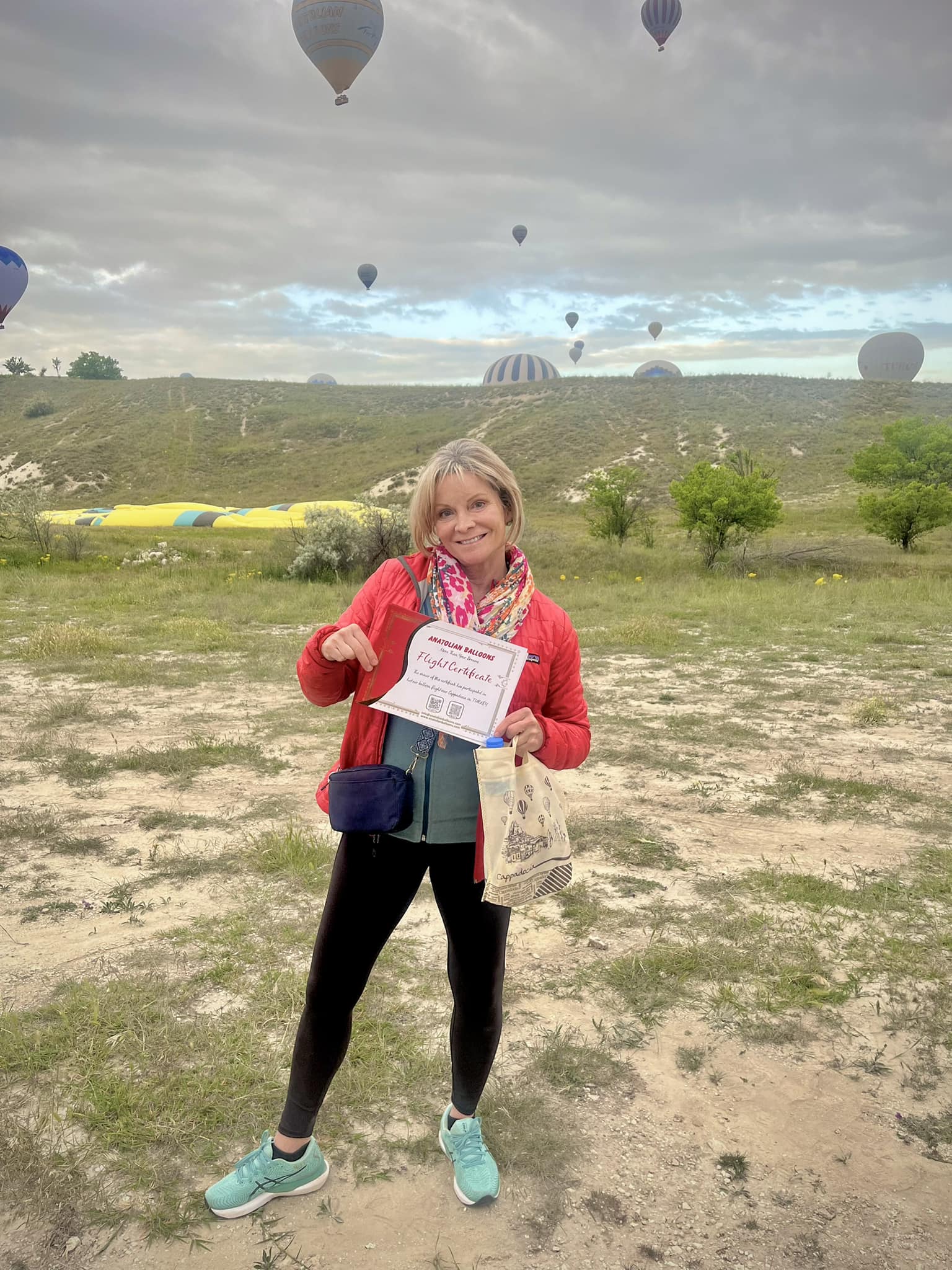
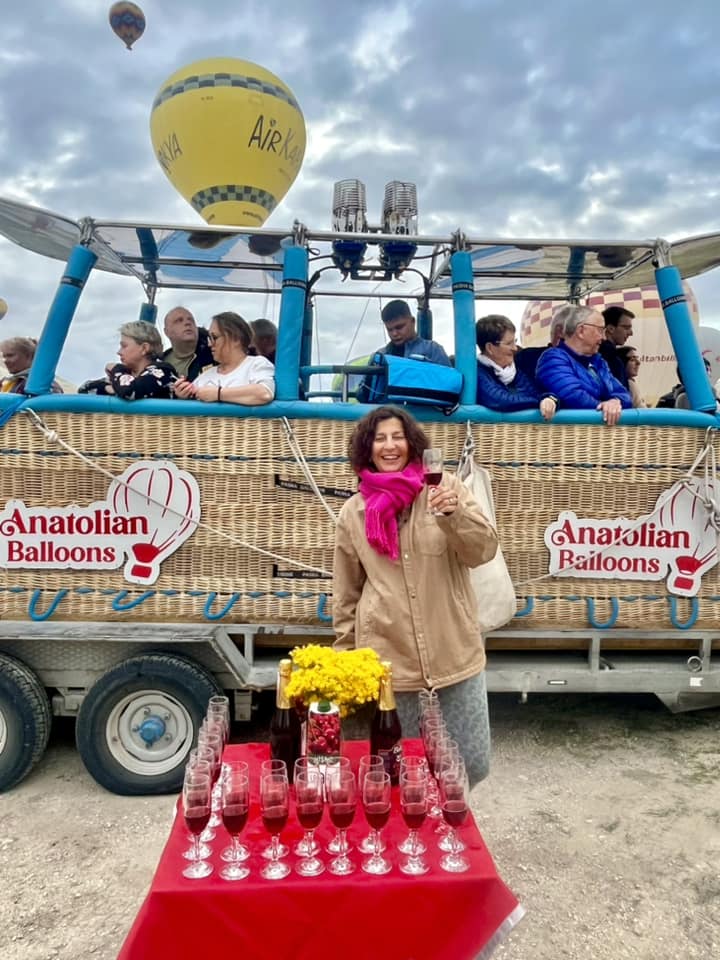
The landing was amazing as the truck with the trailer followed our balloon. Our trailer was positioned exactly where the balloon came down – very impressive! After we all climbed out of the baskets, we had sparkling cocktail drinks waiting for us. The balloon conductor gave a short speech and we all received a certificate. Our balloon ride wasn’t cheap at 250 Euro each, but it was worth it for this once-in-a-lifetime amazing experience!
Love Valley, Goreme, Cappadocia
After we returned to our hotel from the early morning balloon ride, we had breakfast before starting the official part of our Cappadocia tour. The first stop of our full day in Cappadocia was a lookout point onto Love Valley. This valley is distinguished by multiple groups of phallic rock formations, which are said to be the number-one inspiration for the name of Love Valley.
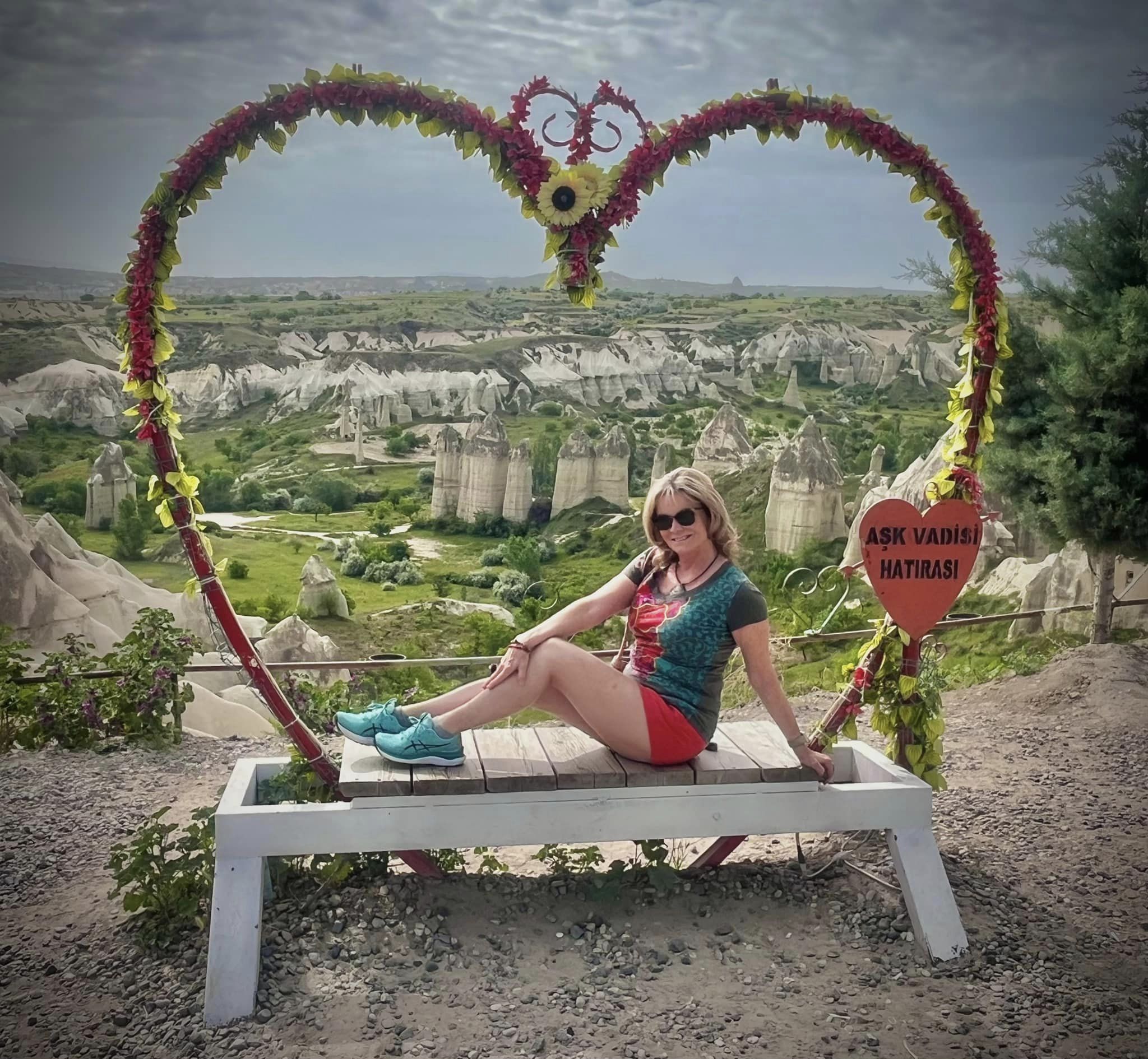
Love Valley is situated just outside of Göreme where our hotel was located. Volcanic lava, water, and wind created these fairy chimney rock formations over millions of years. We only visited the viewpoint for pictures, but there are nice hiking trails through this scenic valley. Entrance to this area is free.
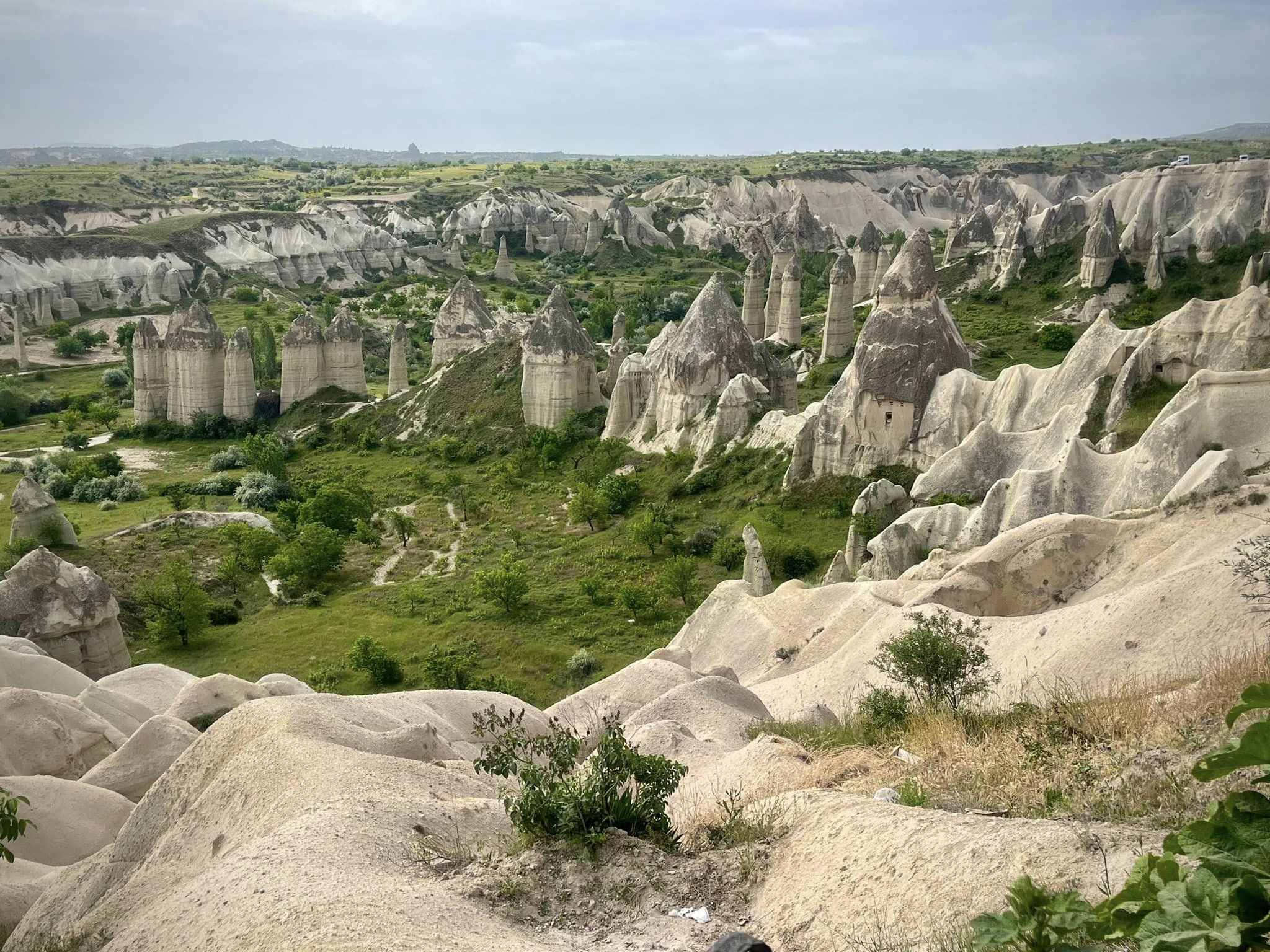
They say that Love Valley is a great place to watch the sunrise and sunset in Cappadocia.
Özkonak Underground City
Our next stop was one of the 36 underground cities in Cappadocia called Özkonak. This location is less famous and smaller compared to Derinkuyu and Kaymaklı underground settlements, but it was still impressive. The Byzantines likely developed this area in the 600’s and 700’s.
Our tour guide paid for our entrance and explained the history while we walked from room to room. Only part of the underground city is open to the public but the below picture shows what some of the settlements looked like many years ago. If you are the least bit claustrophobic, I would not recommend this tour! It was scary and exciting at the same time.
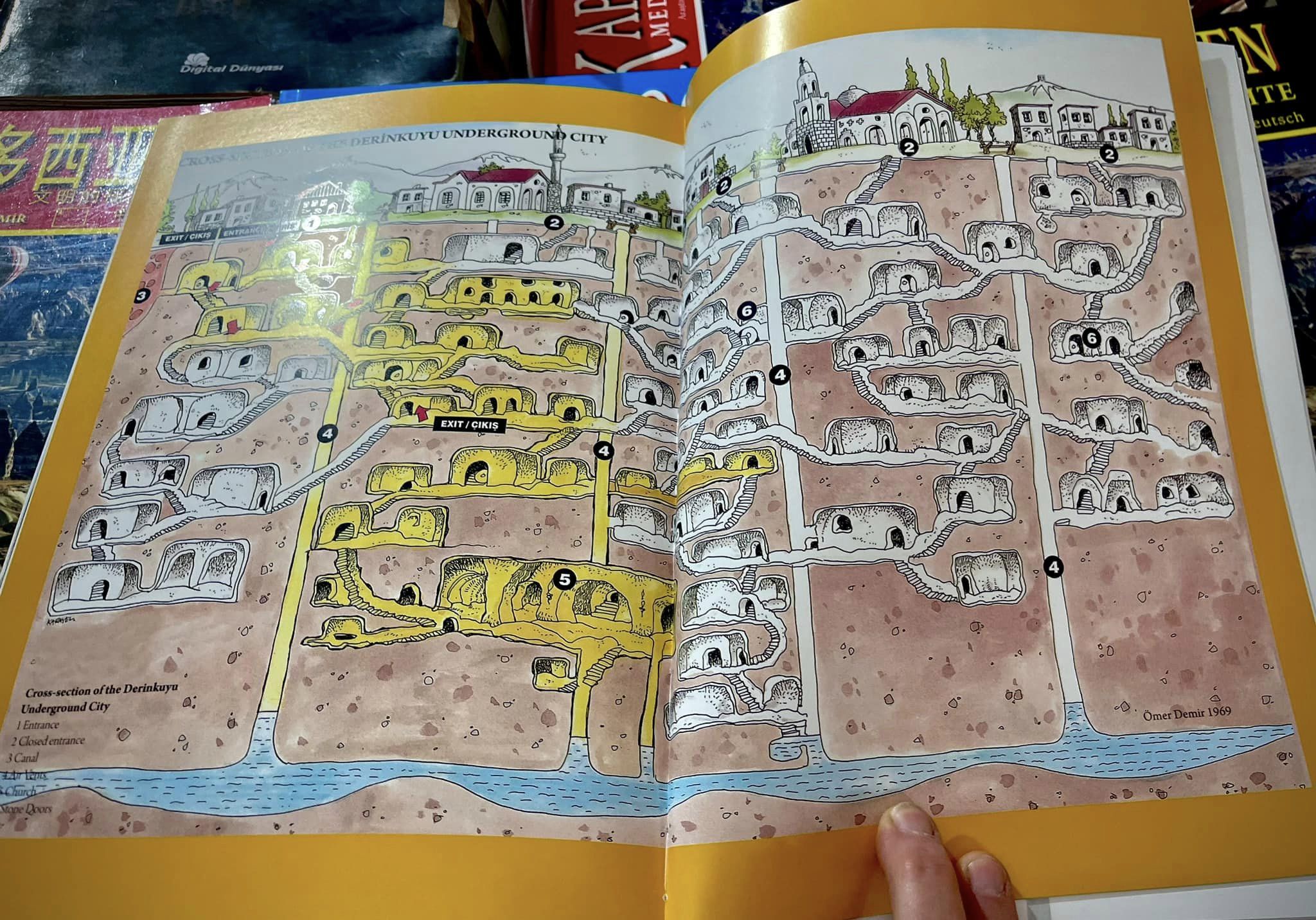
The Ozkonak Underground City was carved out around the 4th century BCE. There were Persians and Romans in this area, but it is the Christians of the Byzantine Empire who take the credit for expanding the underground city. The Christians were escaping persecution, and when they arrived in the region, they expanded the Ozkonak by adding churches and religious schools in the already established city.
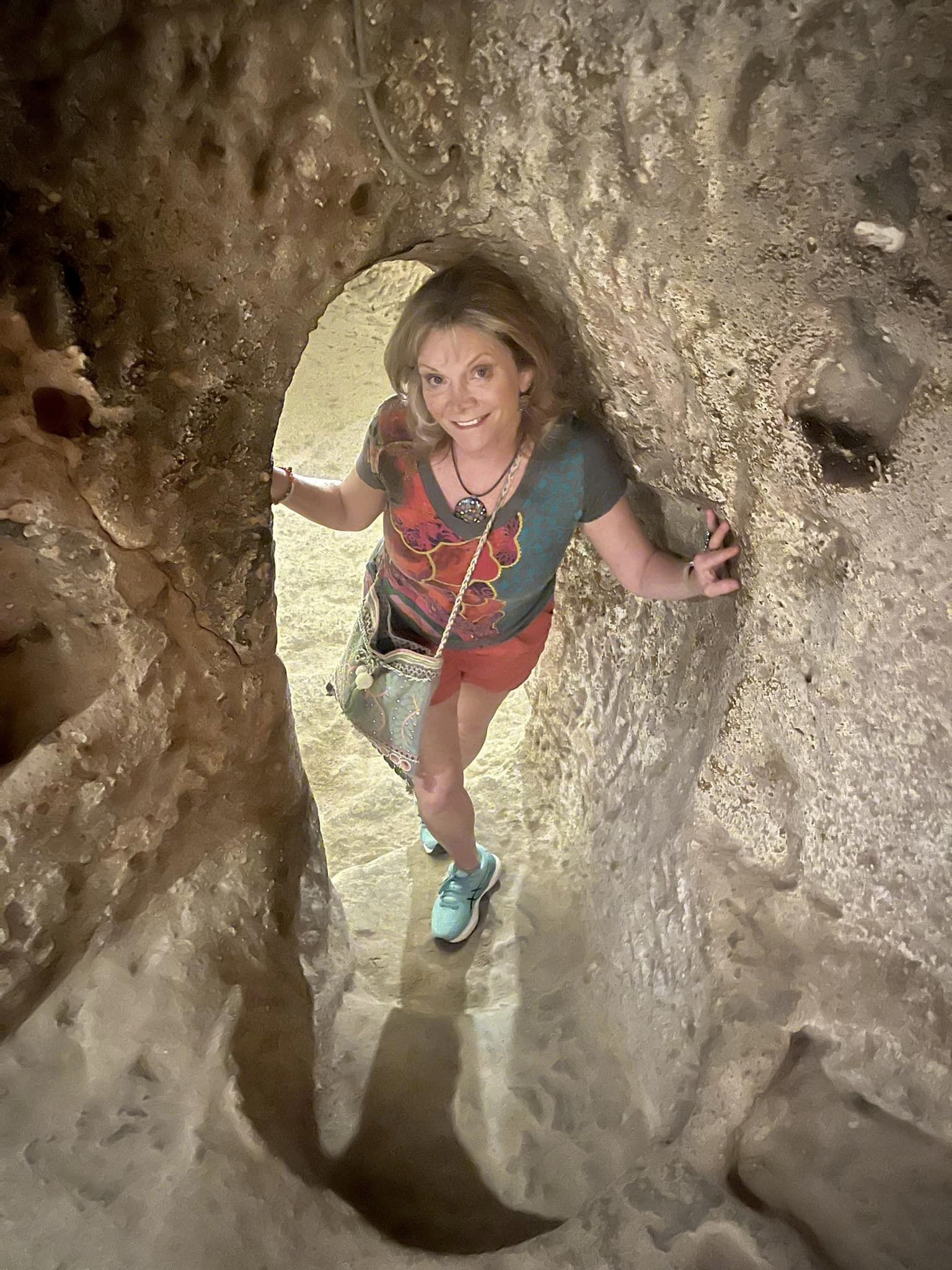
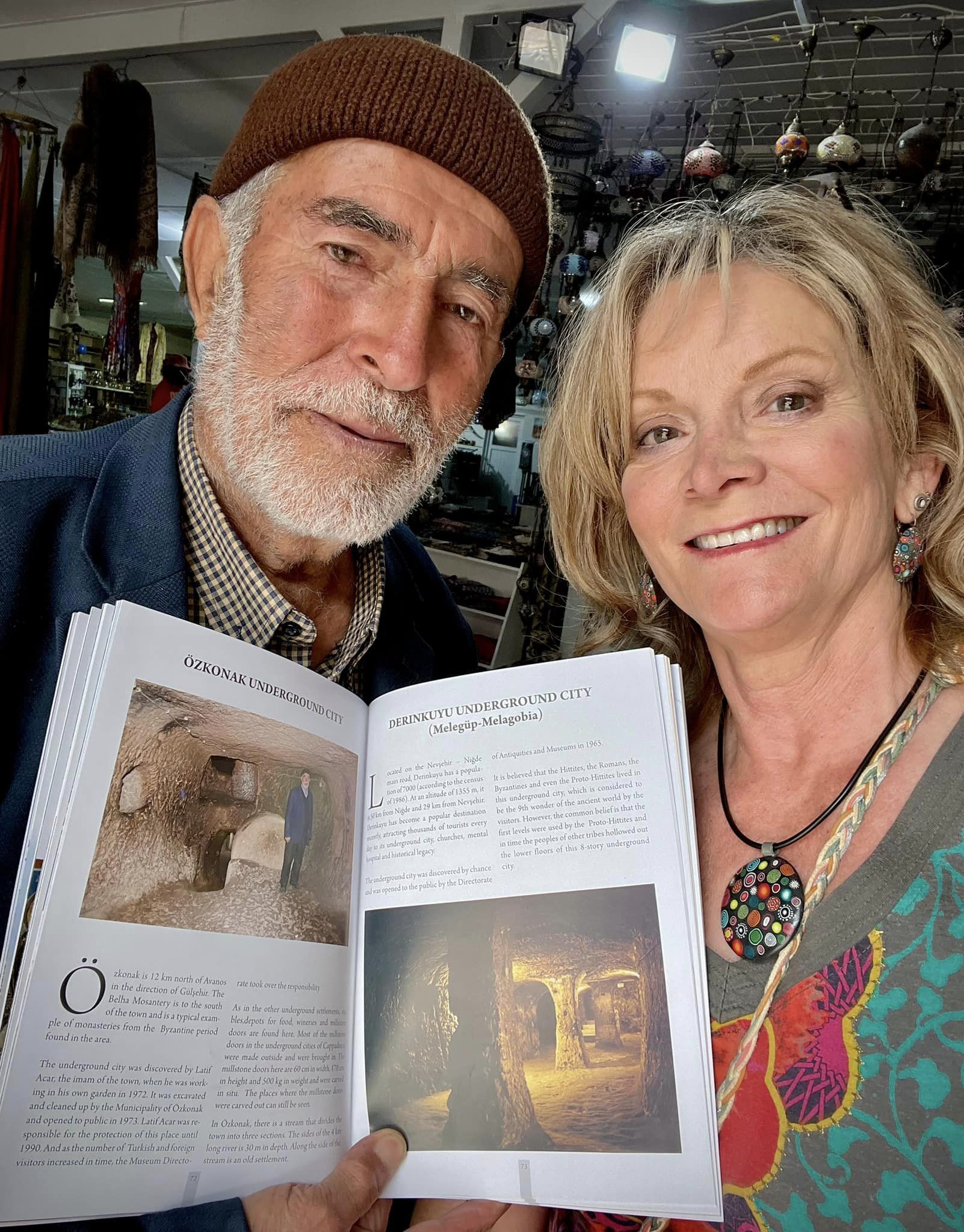
After our tour, we went to a souvenir shop where we met the actual man who discovered the Özkonak underground city (see above photo of him with me). This farmer discovered the city in 1972 long after it had been abandoned. He noticed that when he watered his crops, the water would mysteriously drain into the ground. After further excavation, archeologists uncovered an underground city that could hold hundreds of people at one time.
Avanos
Onward to the next stop of the day, the town of Avanos which sits on the banks of the longest river in Turkey, the Kızılırmak (or Red River). This site is known for its pottery which has been made here for 4,000 years. The special red clay from the river is used to make the pottery. You will find many pottery shops and places where you can attempt making your own souvenir.
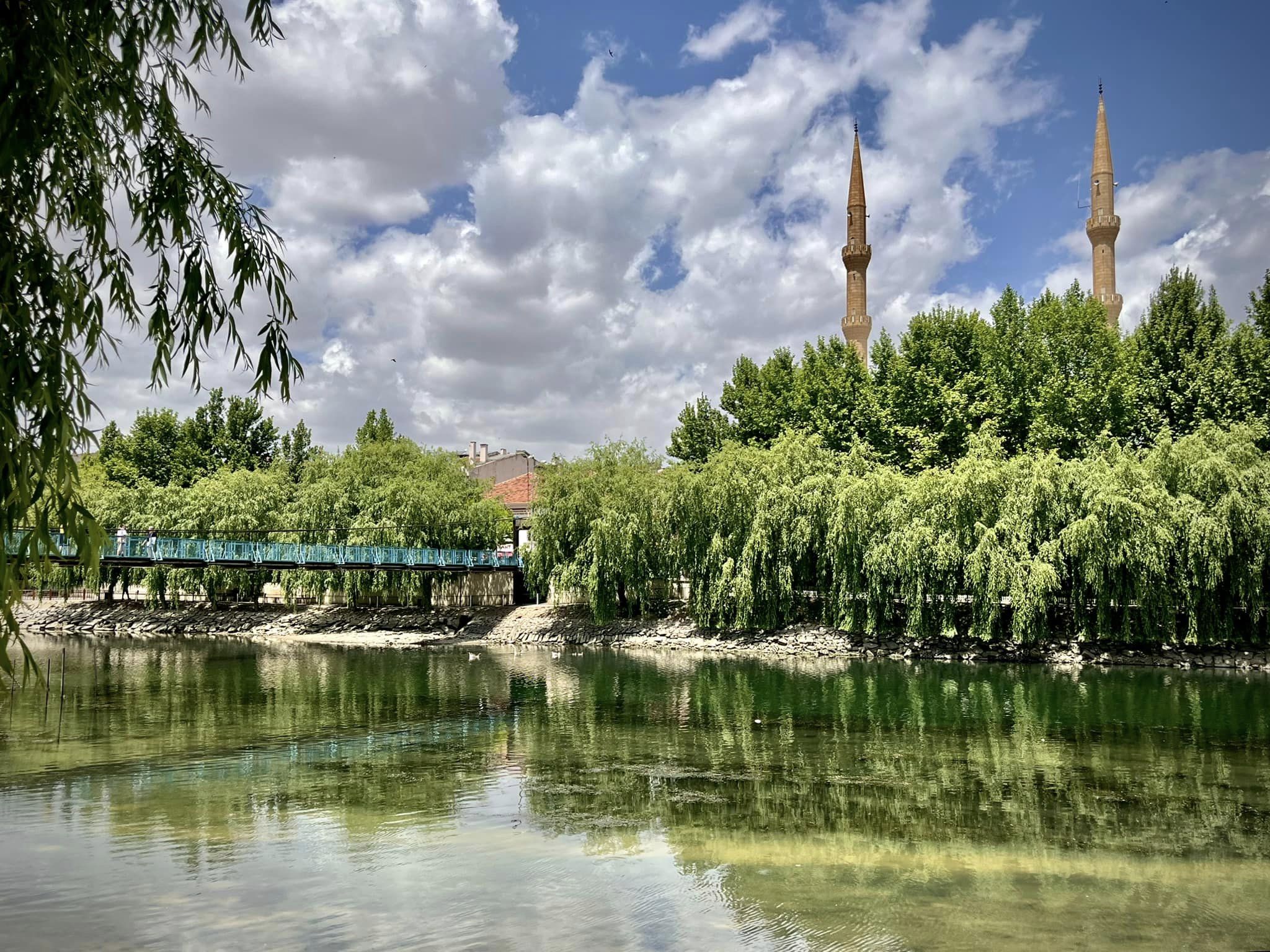
We crossed over the long suspension bridge and walked around the quaint town before leaving for our next sightseeing spot.
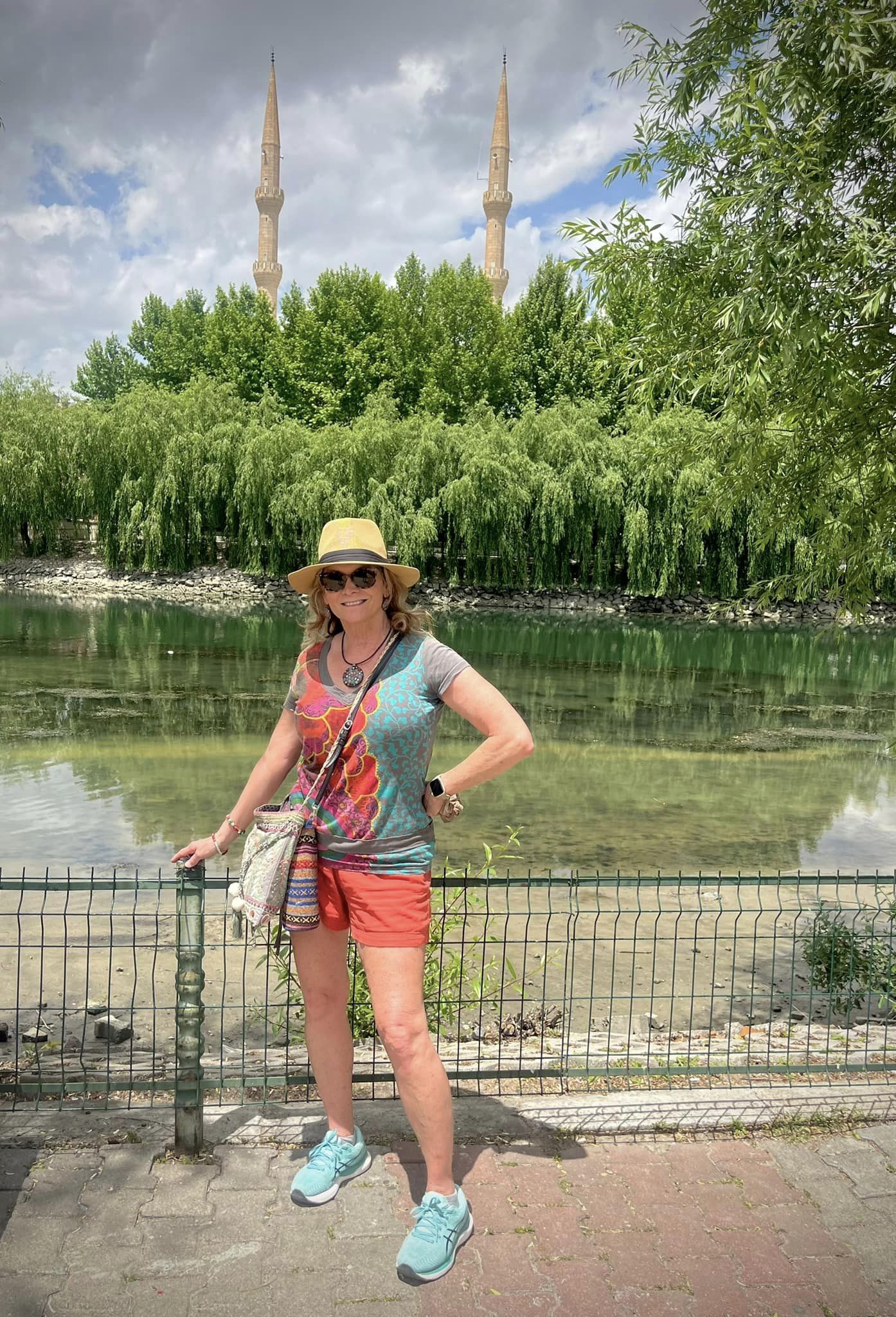
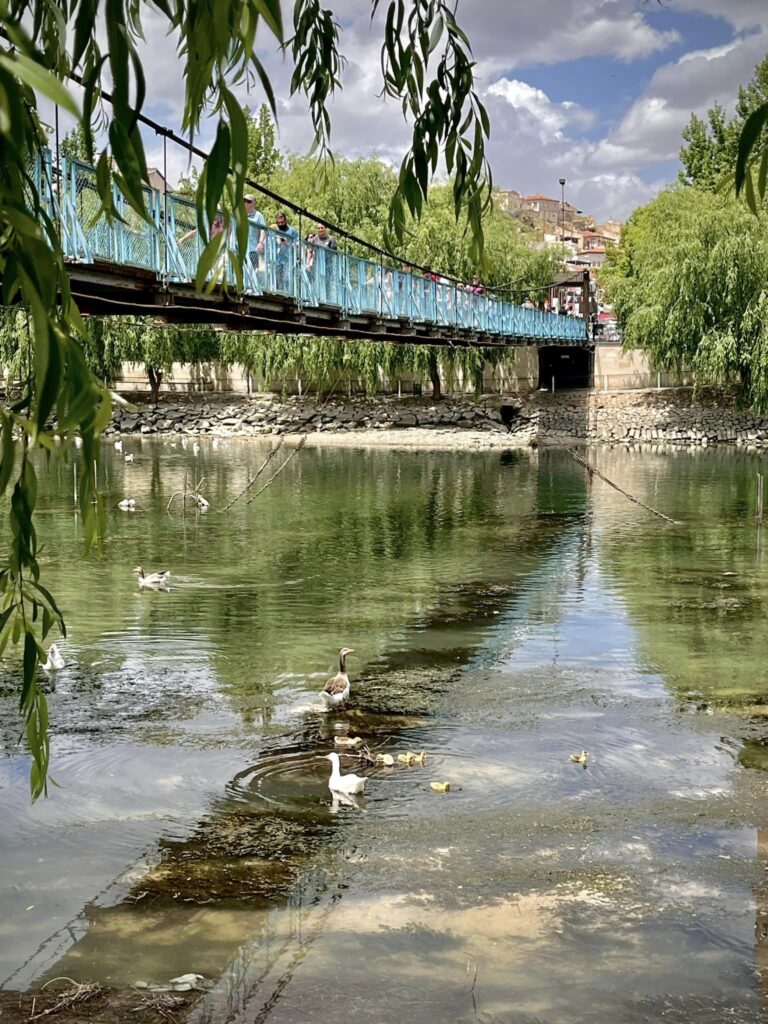
Paşabagı (Valley of the Monks)
Paşabagı, also known as the Valley of the Monks, is a unique area with the highest concentration of fairy chimneys. These unique formations, formed by the forces of wind and water, resemble mystical creatures that arise from the earth. Pasabag valley has a long history with monks and hermits who cut many homes and churches directly into the rock pillars.
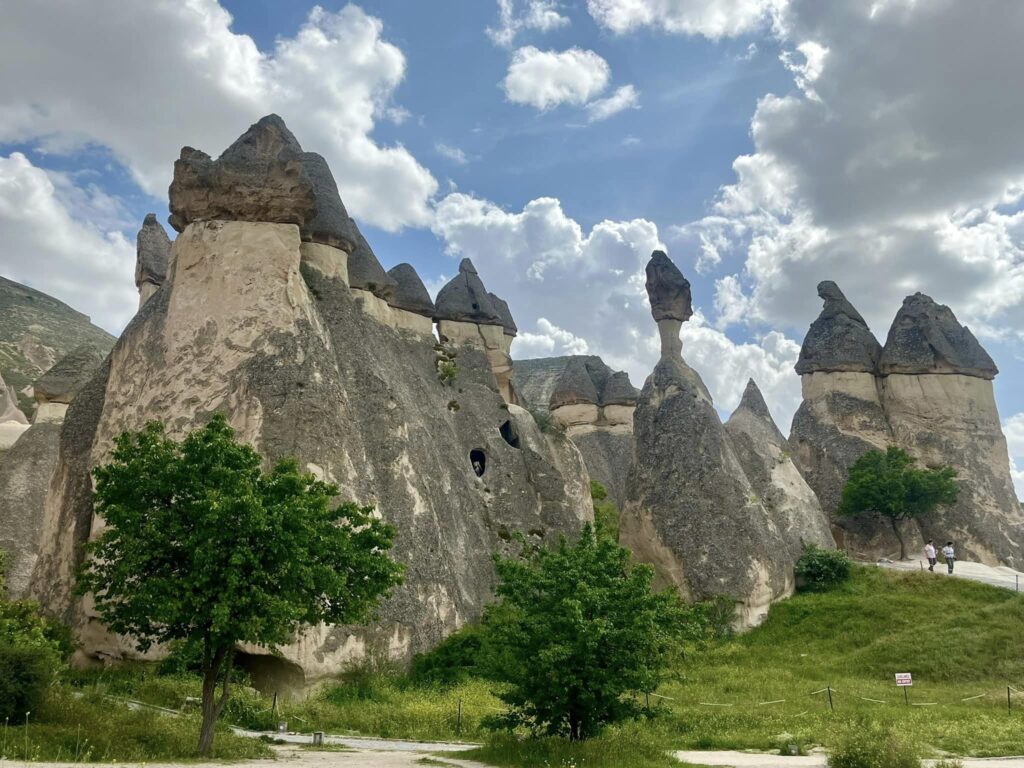
We had some free time here just to stroll along the paths and admire these fascinating rock pillars. The background goes back millions of years when volcanic eruptions rained ash across the entire region. The ash hardened into tuff and was later covered by a layer of basalt. Because Tuff is porous and softer than basalt, erosion wore down the layer of tuff into tall pillars. Since basalt eroded more slowly, it formed a mushroom-shaped cap on top of each pillar.
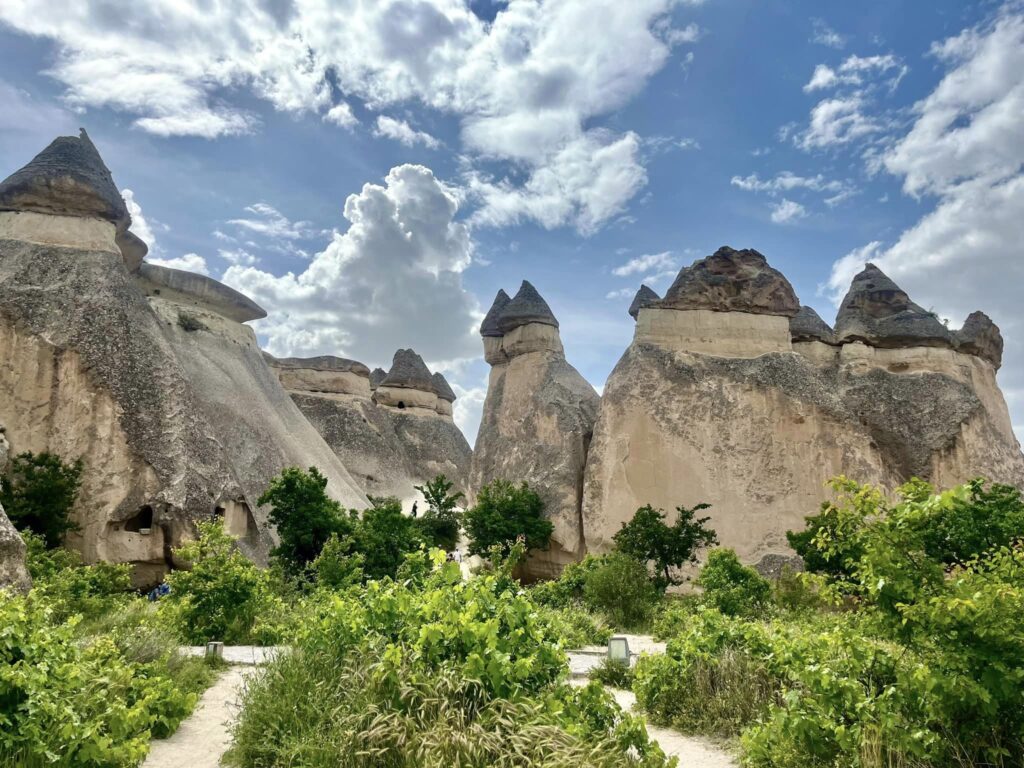
Zelve Open Air Museum in Cappadocia
The last park we visited in Cappadocia was the Zelve Open Air Museum. You’ll want to go during the golden hour as we did. The formations were even more stunning with the sunset lighting. This open-air museum contains cave dwellings, churches, and monasteries carved into the soft volcanic tuff.
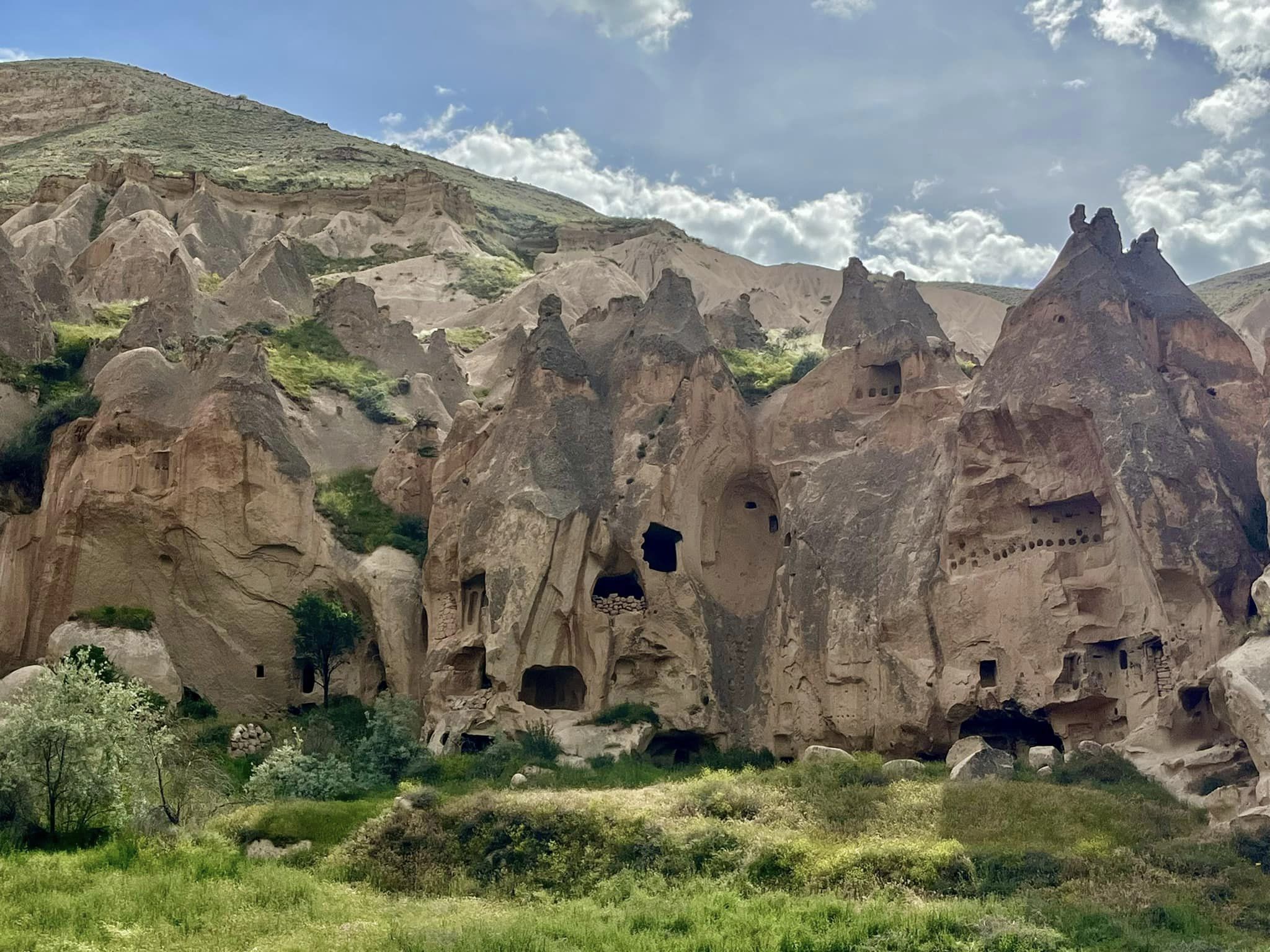
History says that Zelve was used as a monastery and seminary to train priests in the 9th to 13th centuries, during the Persian and Arab invasions. It was inhabited until 1952 when the people abandoned the valleys and founded Goreme village just down the road.
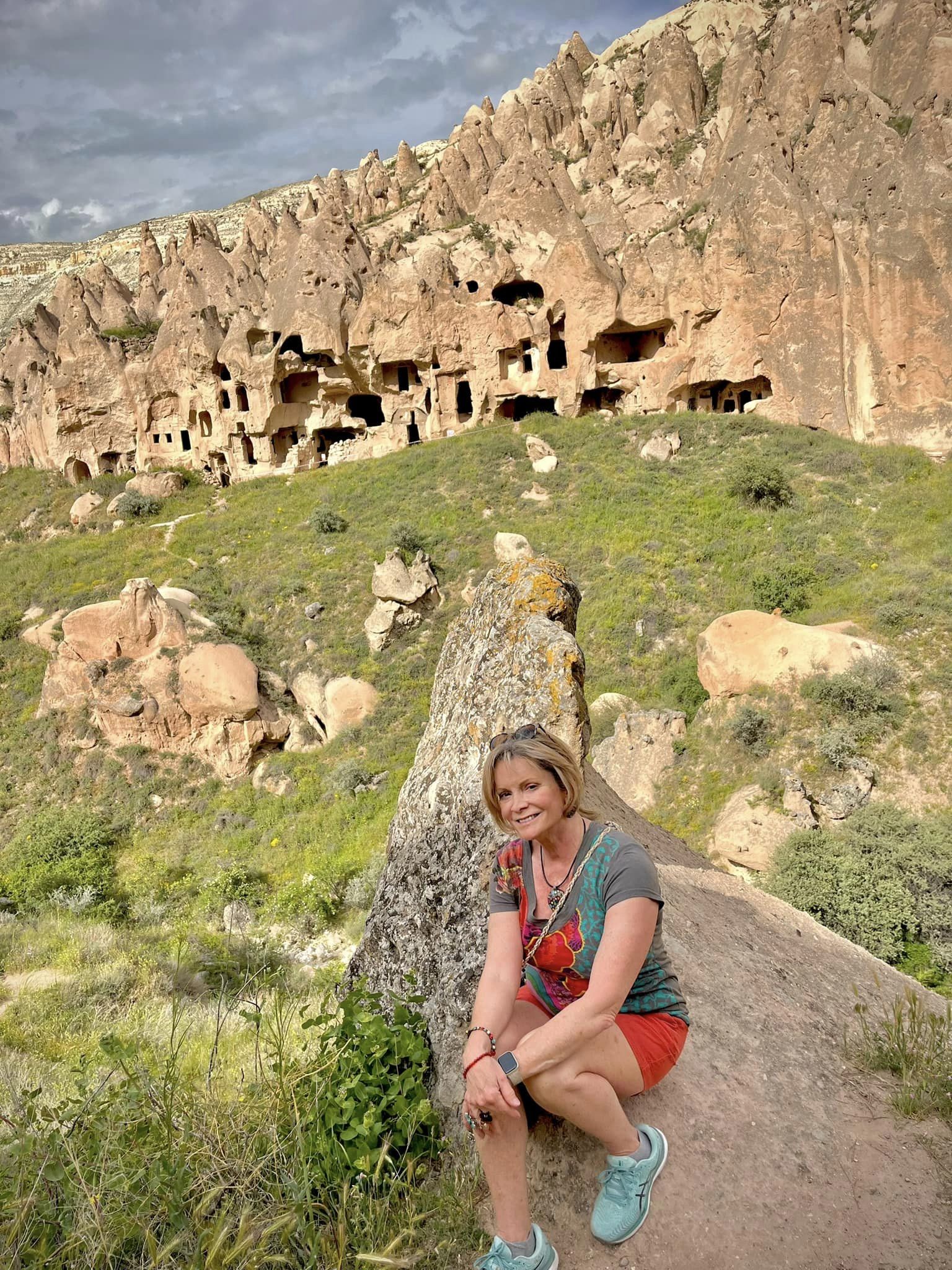
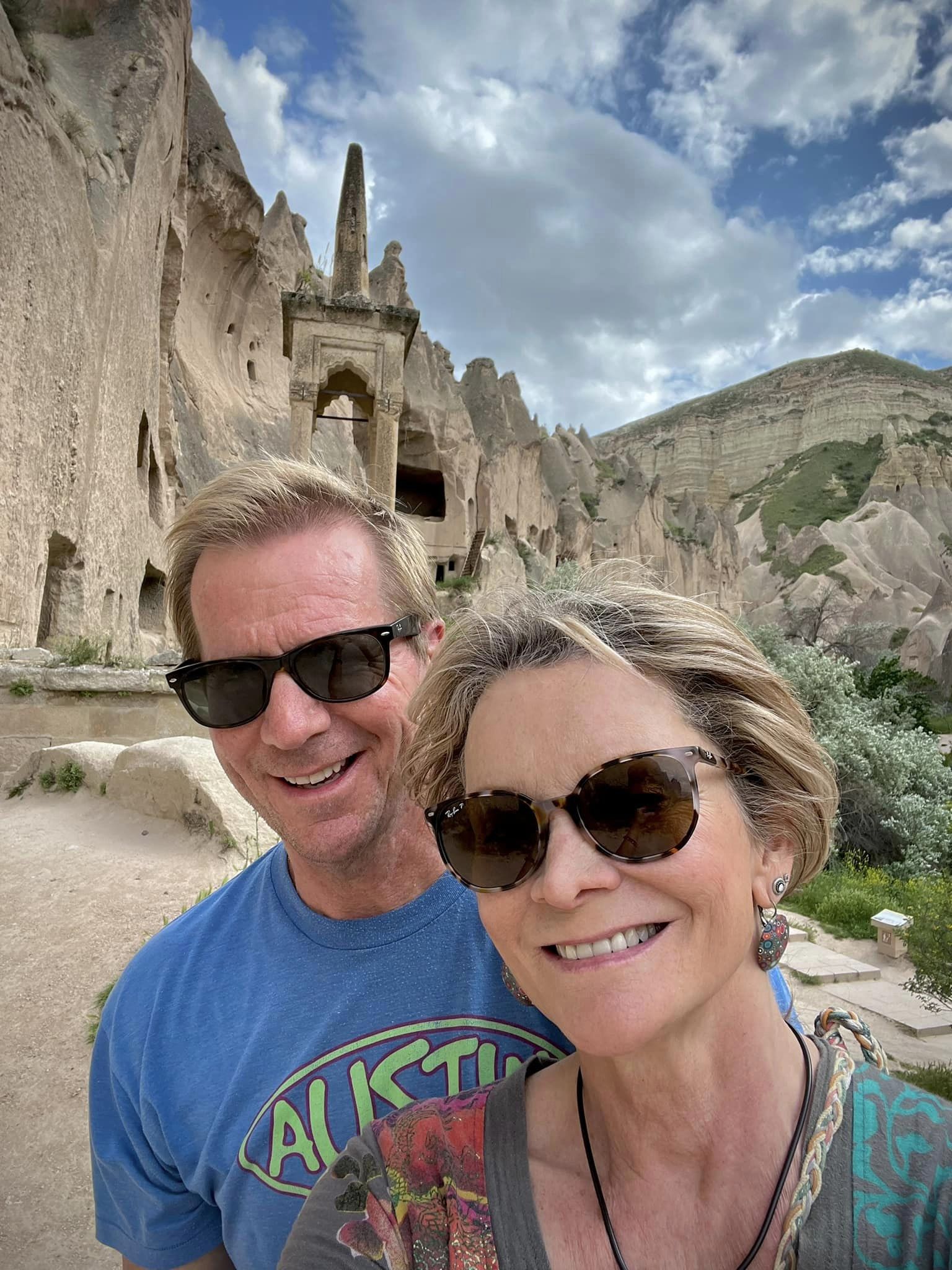
Zelve was home to one of the largest communities in Cappadocia and inhabited up to the mid-20th century. We loved walking through this area, admiring the otherworldly rock formations, and imagining how people lived here over the years.
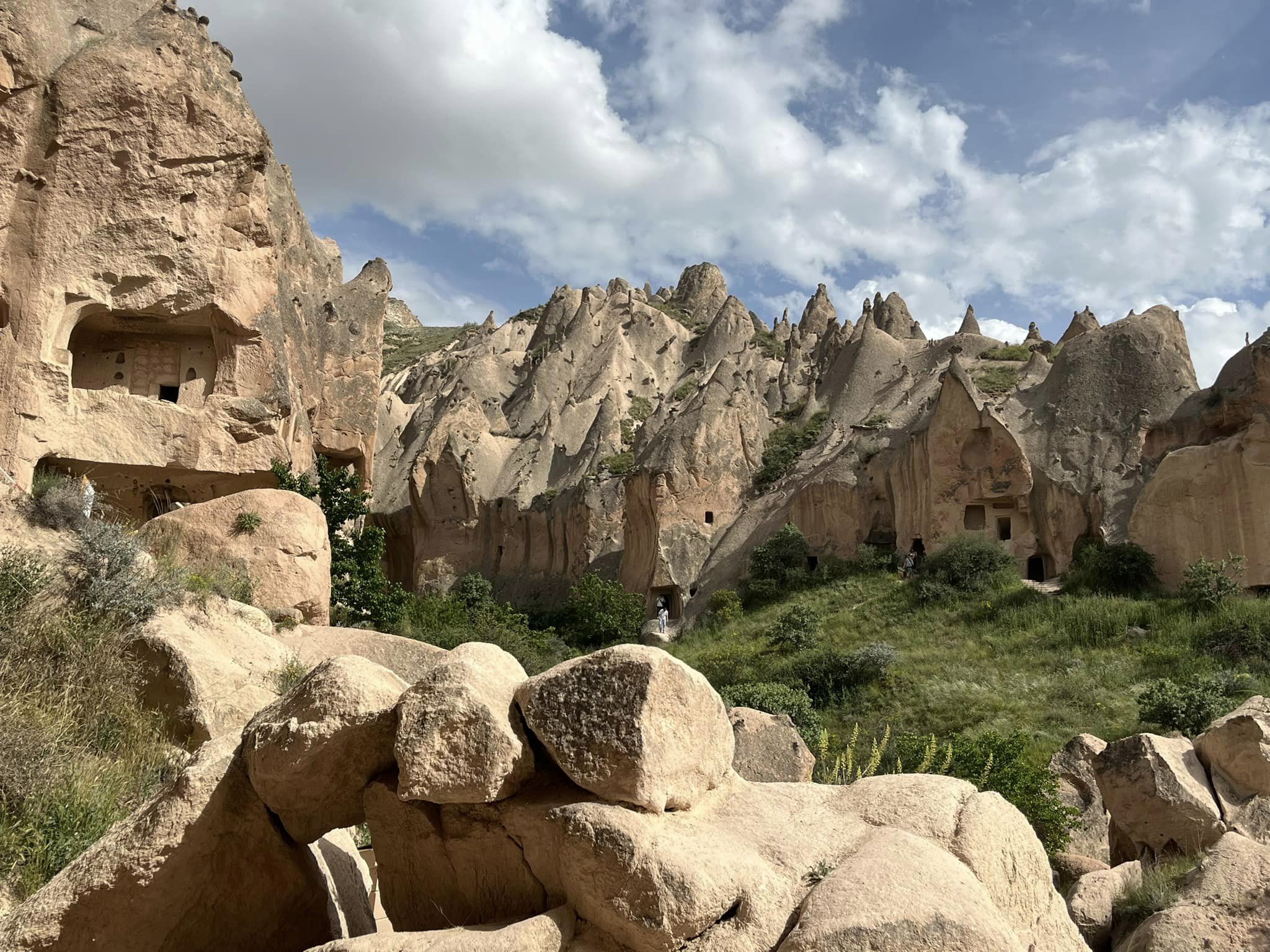
Three Sisters Fairy Chimneys in Cappadocia
On the way back to our hotel, we stopped at the famous Three Sisters rock formations. Also referred to as the Three Beauties, folklore explains their existence.
There was a fairy princess, charmed by a local shepherd, who defied her royal lineage to be with him. Their love blossomed, leading to the birth of a child. Infuriated by this union, the fairy king sent his army to retrieve his wayward daughter. As the forces closed in, the princess prayed for her family’s unity. In answer to her plea, they were miraculously transformed into the ‘Three Beauties Fairy Chimneys’, standing together for all eternity.
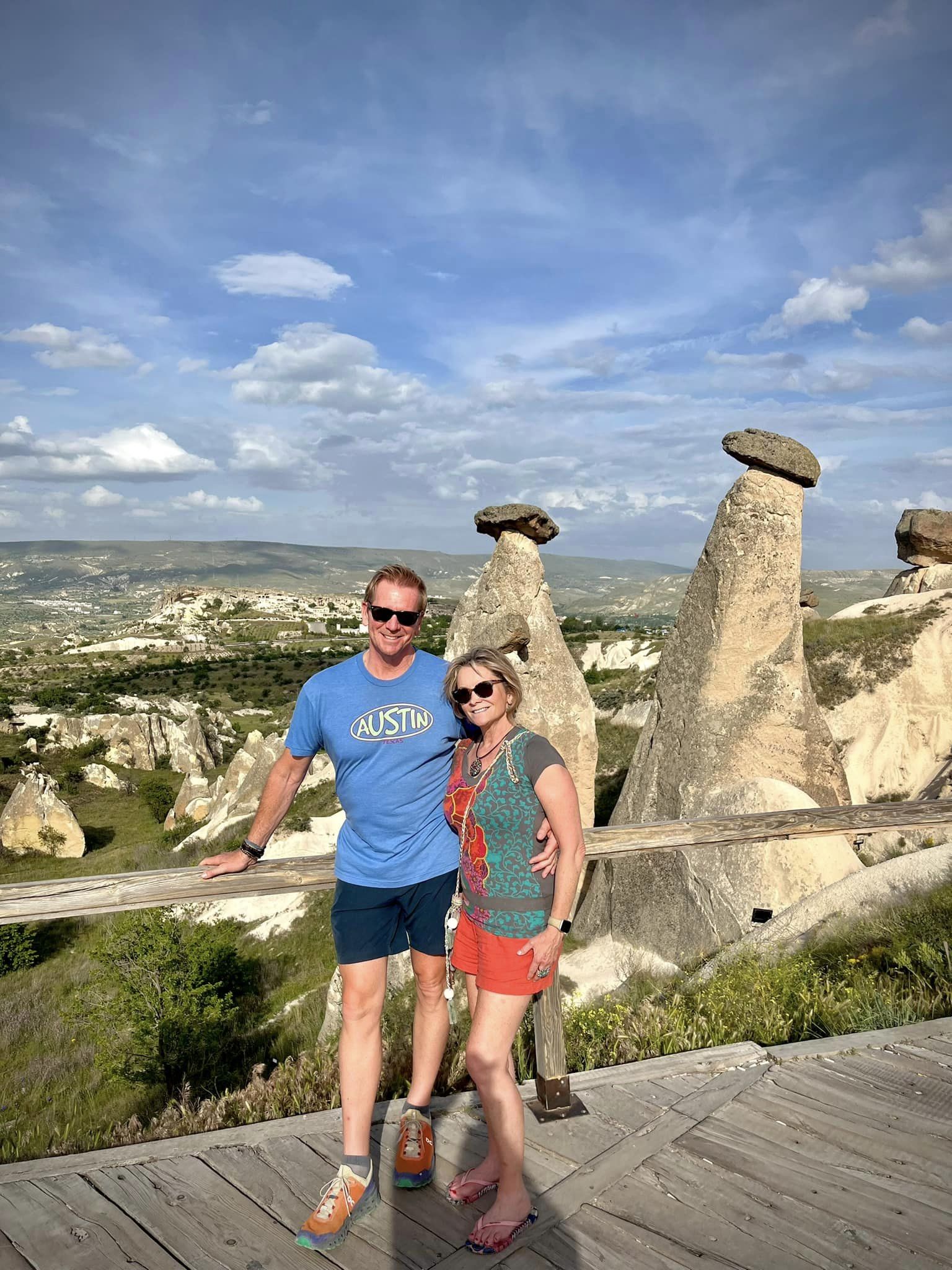
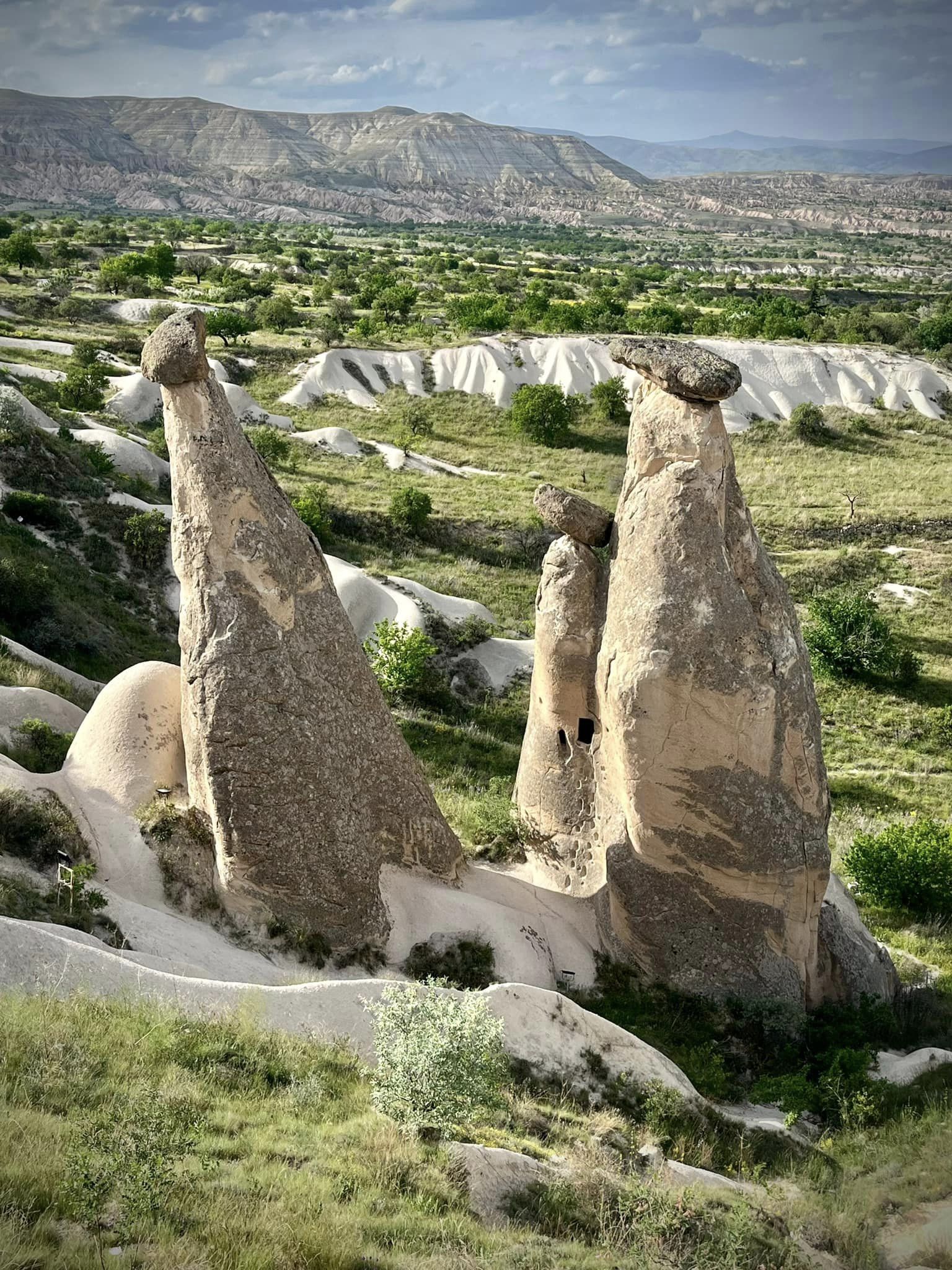
These formations, with their funnel-shaped bodies, are not just geological wonders but also canvases of nature’s artistry. The legends surrounding them, coupled with the breathtaking landscape, provide an unparalleled experience.
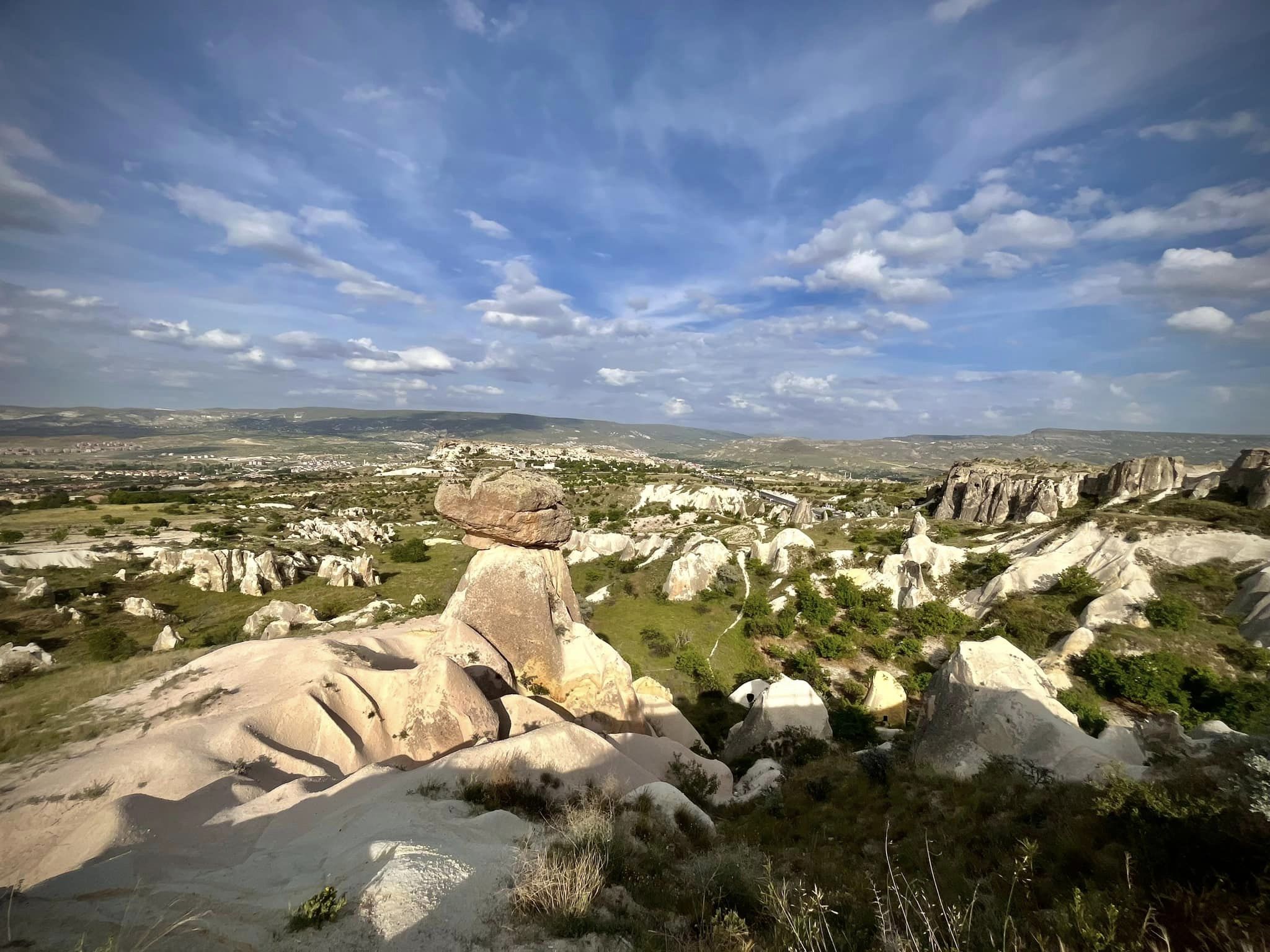
We also stopped at another lookout point called the Göreme panoramic viewing point. You can never get tired of seeing the beautiful landscapes in Cappadocia.
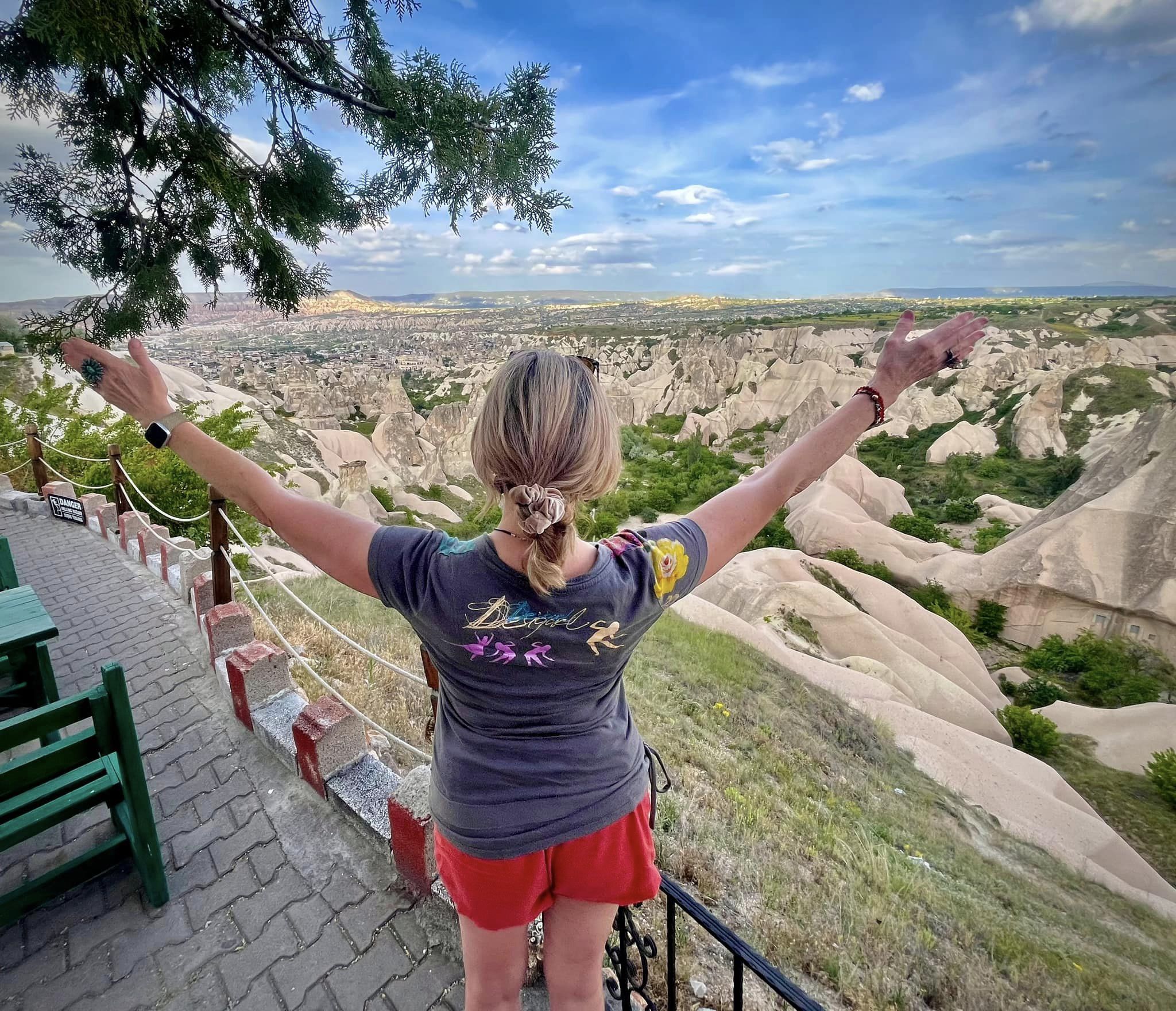
It was a long day filled with many spectacular sights. We were grateful for the pleasant weather while spending only one full day in Cappadocia.
4th day / Cappadocia – Sille – Antalya
Sille
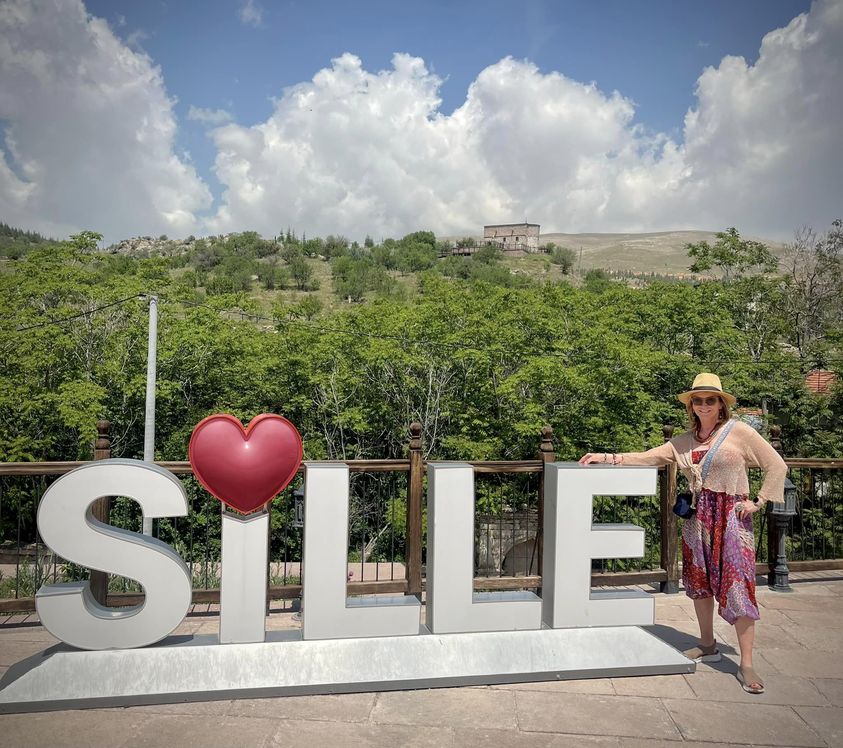
It was our fourth day of the tour and time to leave the lovely Cappadocia back to Antalya. It was another long 6-hour drive but we were prepared this time. We had a stop in the small village near Konya called Sille.
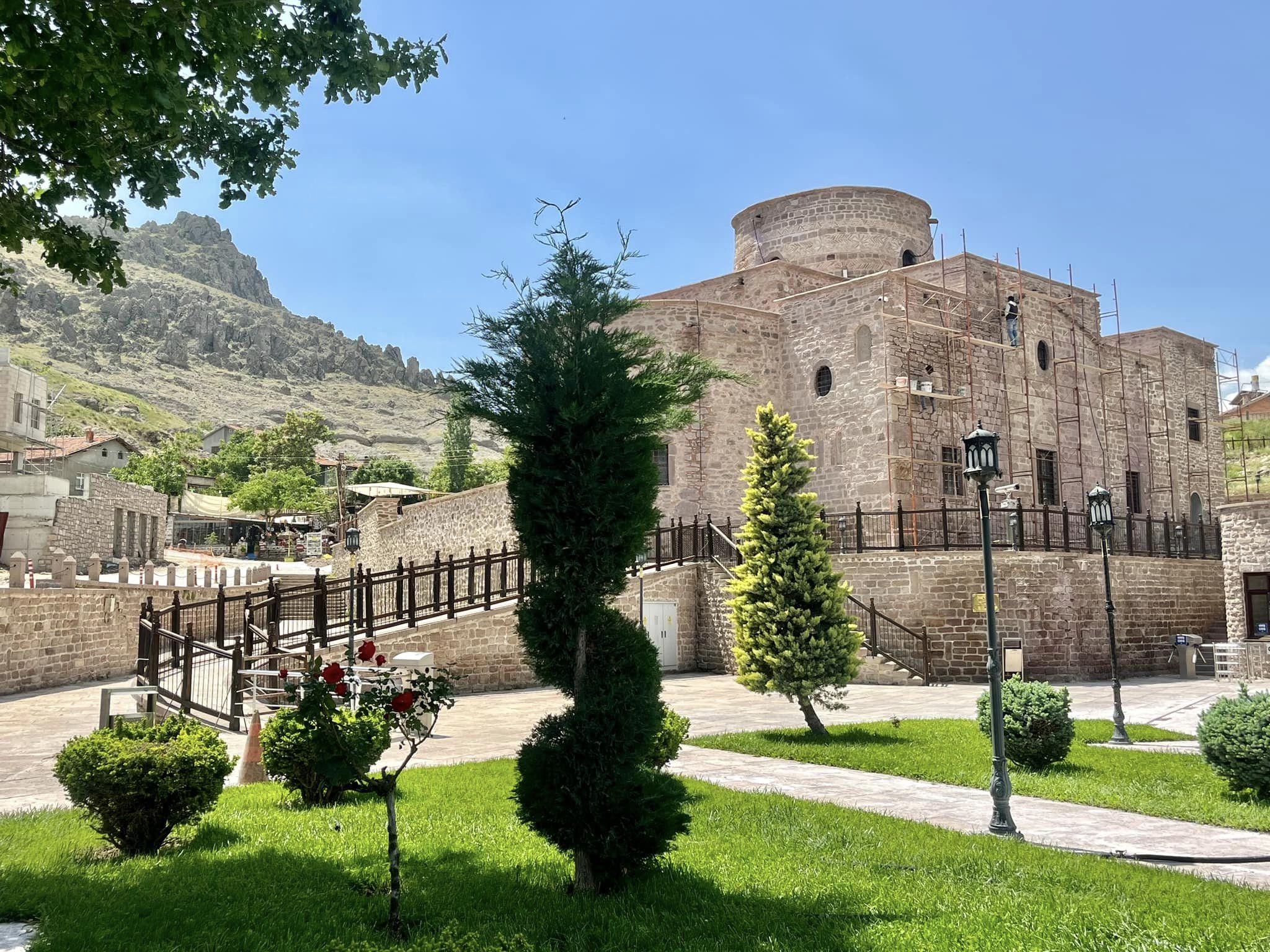
We walked around with our tour guide to learn about the history of this village and its landmark church. The Byzantine church called Hagia Eleni is one of the oldest churches in Anatolia.
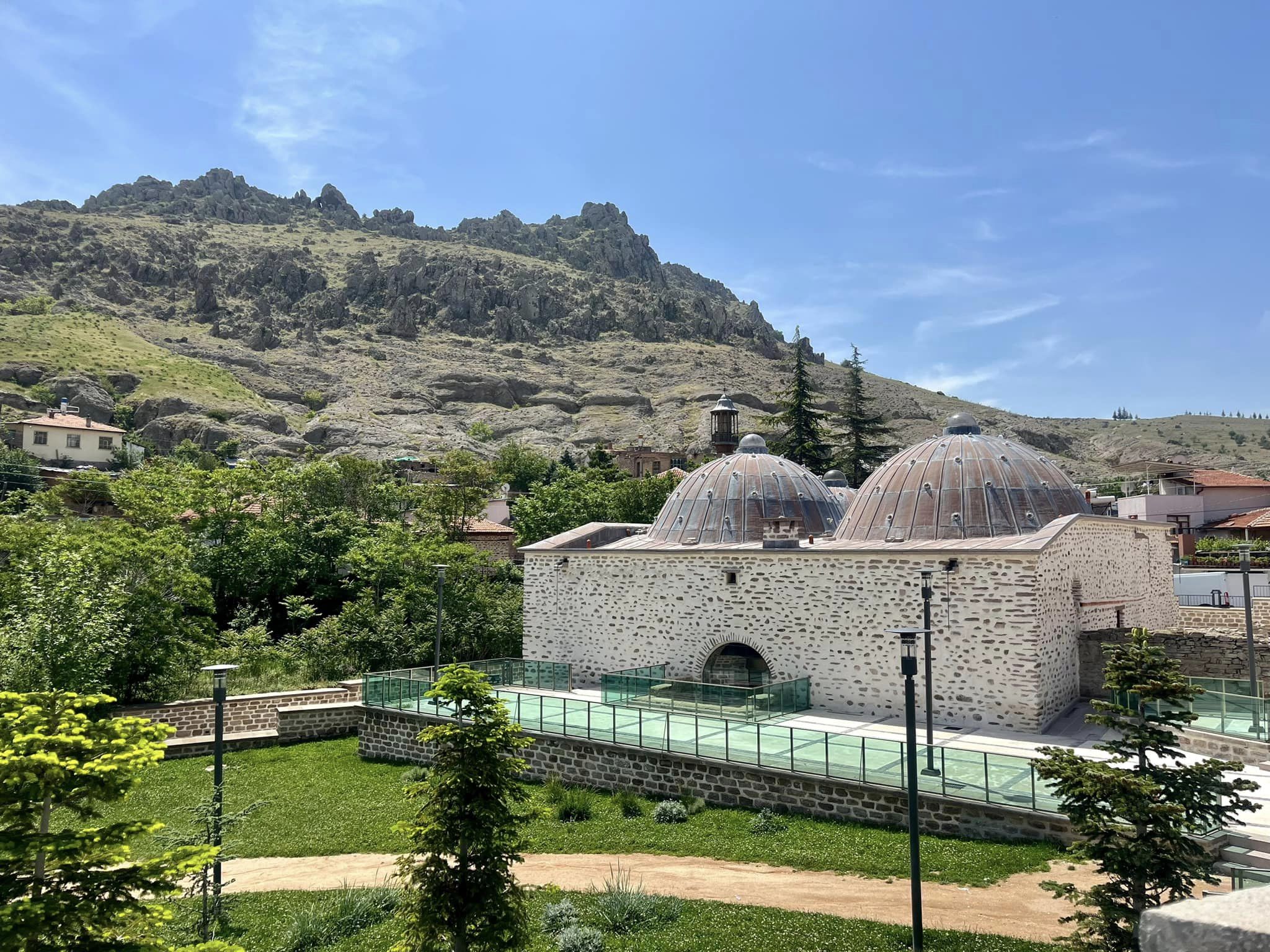
The mother of Byzantine King Constantine, Helena, visited Konya during her journey to Jerusalem for pilgrimage in 327 A.C. She saw the carved temples of the first Christian ages there and decided to build a temple for Christians in Sille.
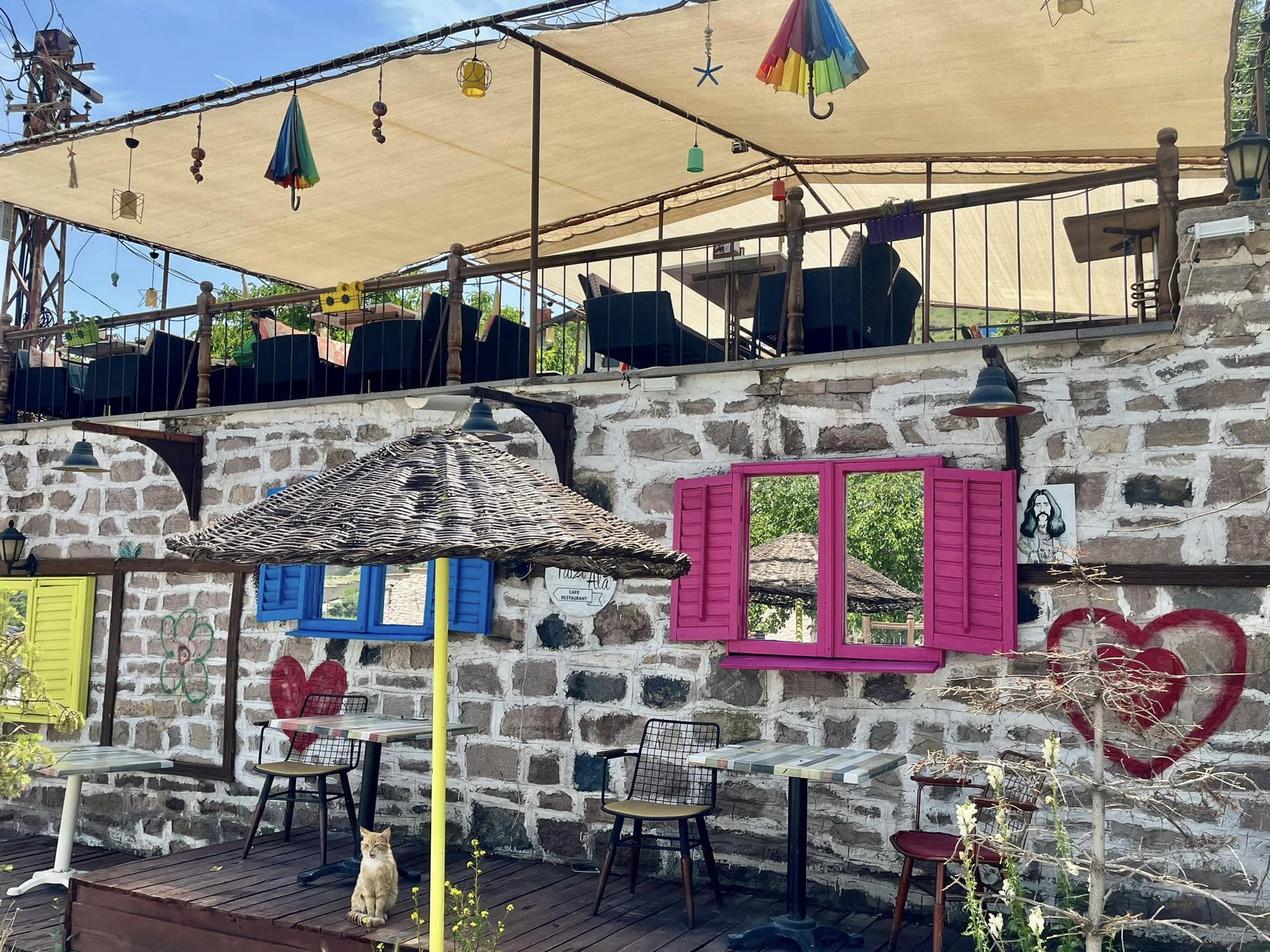
Lower Düden Falls in Antalya
When we arrived finally to Antalya, we were driven directly to see the beautiful waterfall on the Mediterranean coastline. park. The Lower Düden Falls is situated on a large green space with picnic tables, a cafe, and a walkway that runs along the top of the cliffs.
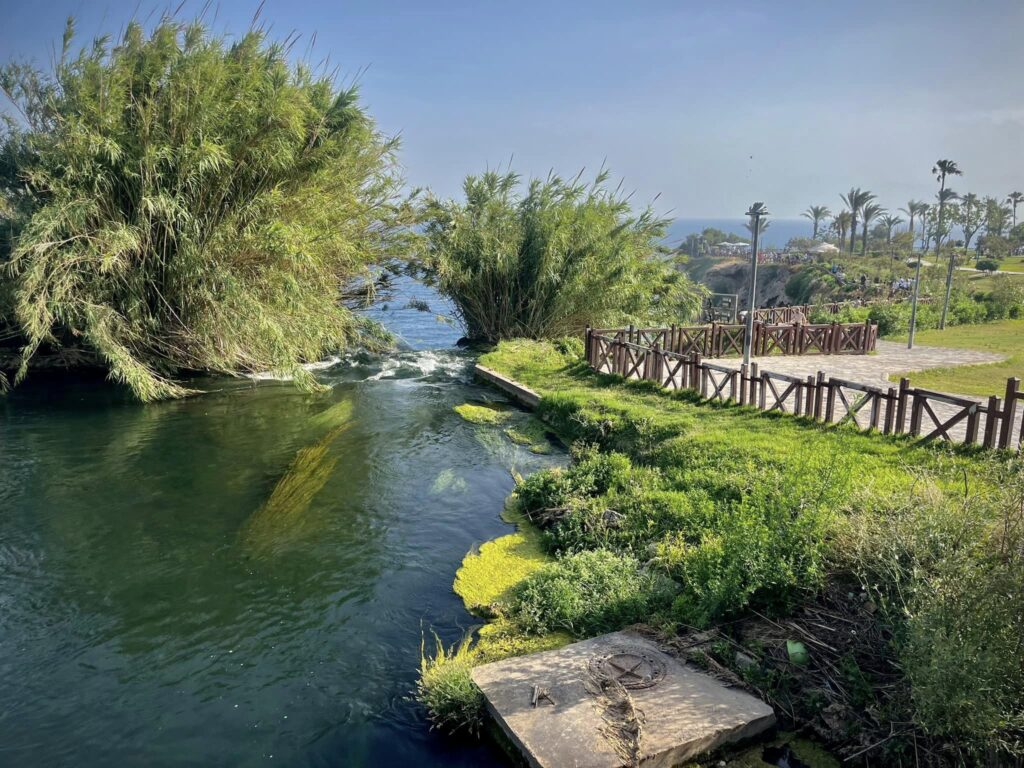
We walked along the path crossing a bridge over the Düden river which feeds the falls. The river is tiny compared to the size of the waterfall, explained by the fact the river is largely underground.
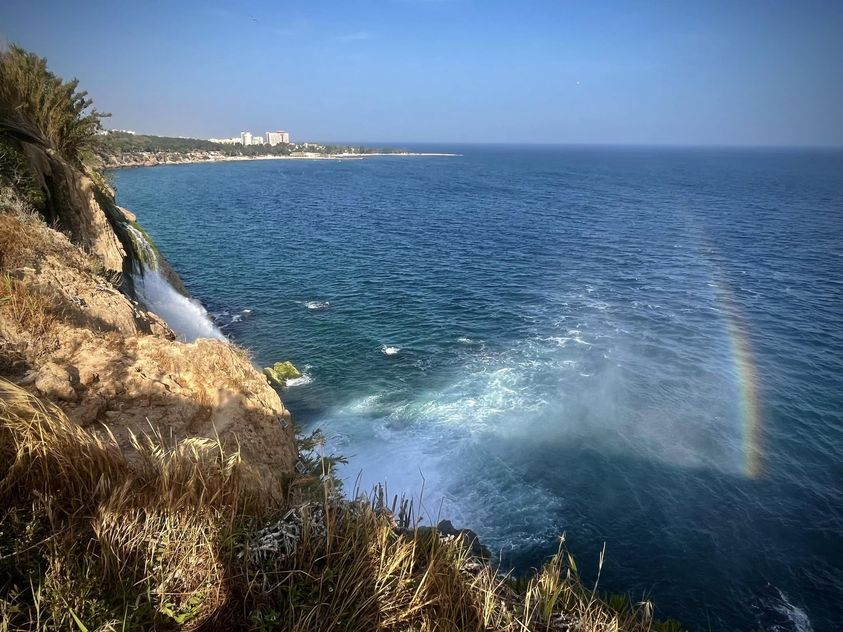
There were many photo opportunities with the glistening water and rainbow effect. It wasn’t included in our tour, but a trip to the Upper Düden Falls would be nice to visit. They are located in the northeast of Antalya, 12 km from Kaleiçi (old town).
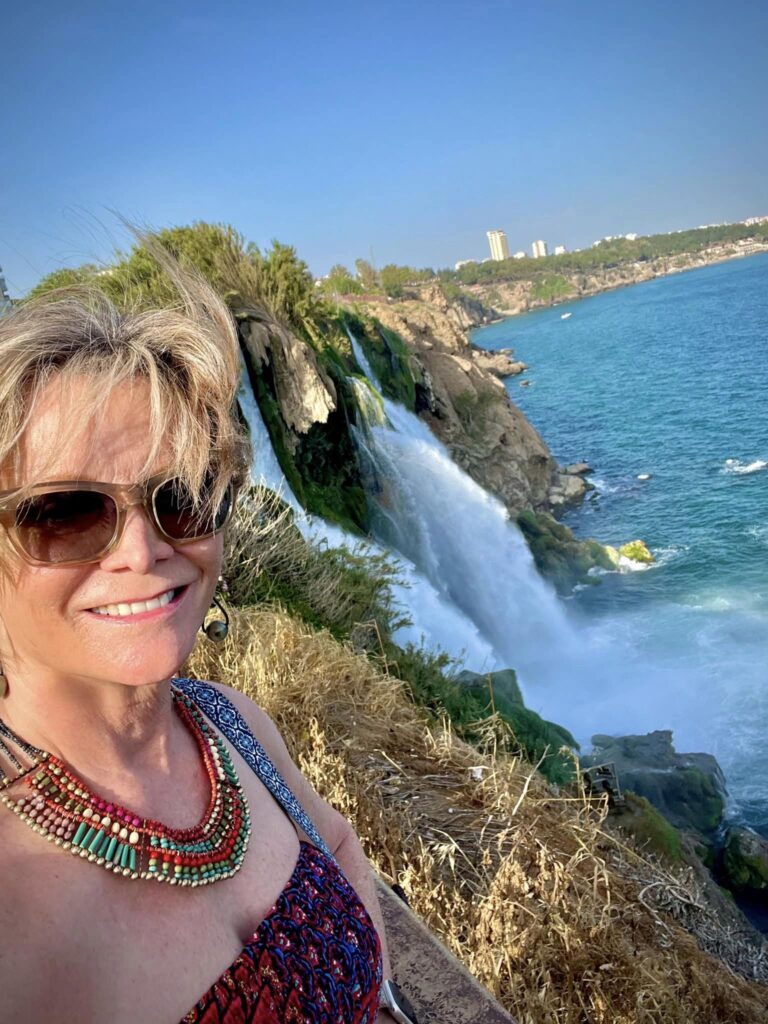
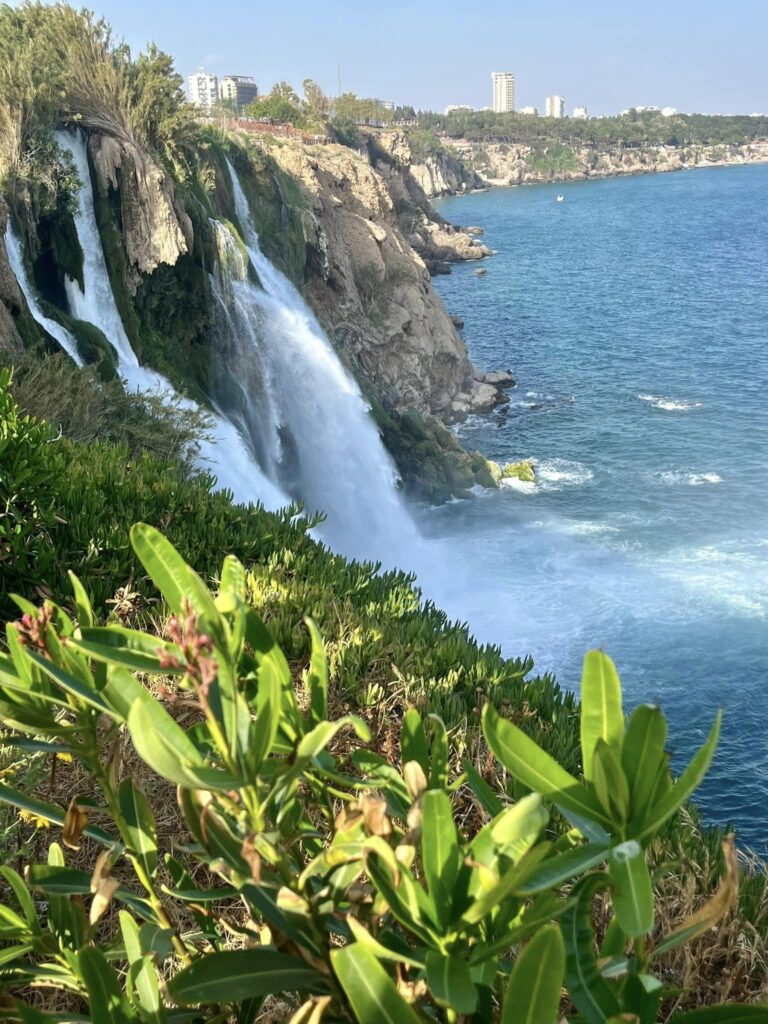
Old Town Antalya
Back to our hotel in Antalya for one night, we asked the guide if we could do our own excursion to the Old Town. It was a shame that this visit wasn’t part of our tour itinerary, as we found the town to be very pretty. It was dark when we arrived, but we walked around the small alleys and stopped at one bar for a drink.
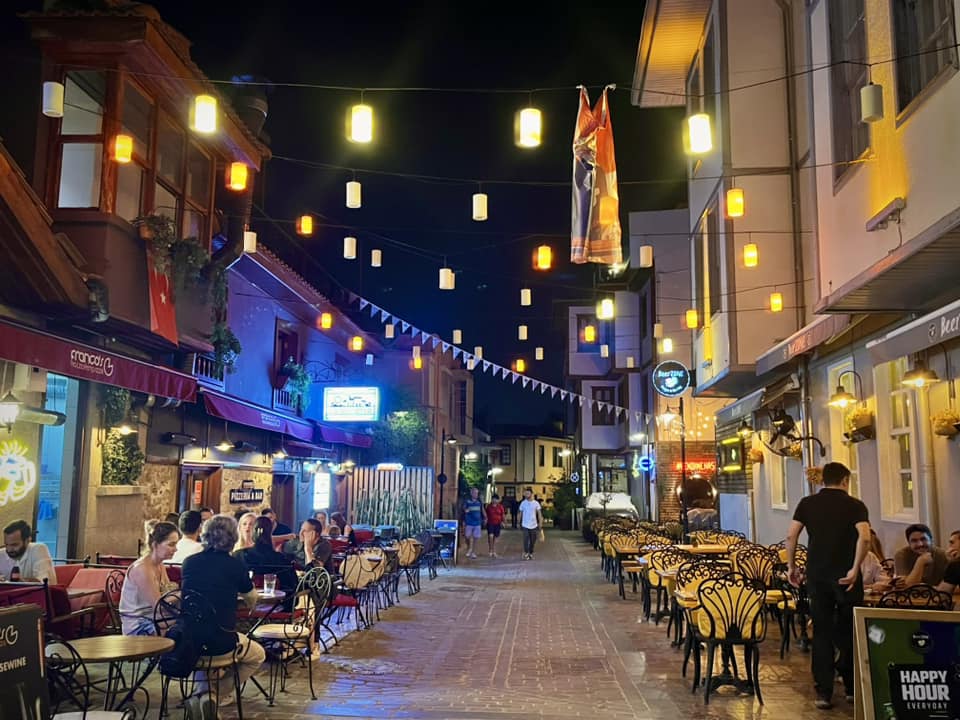
The old town, called Kaleiçi, is perched on steep cliffs next to the Mediterranean and shielded by the city walls. Hadrian’s Gate is part of the city’s walls and is the most famous landmark and entrance to Kaleiçi. The three arches are called Üç Kapılar (three gates) in Turkish. The arch was built in the Roman period in 130 AD to commemorate the visit to the city by Emperor Hadrian.
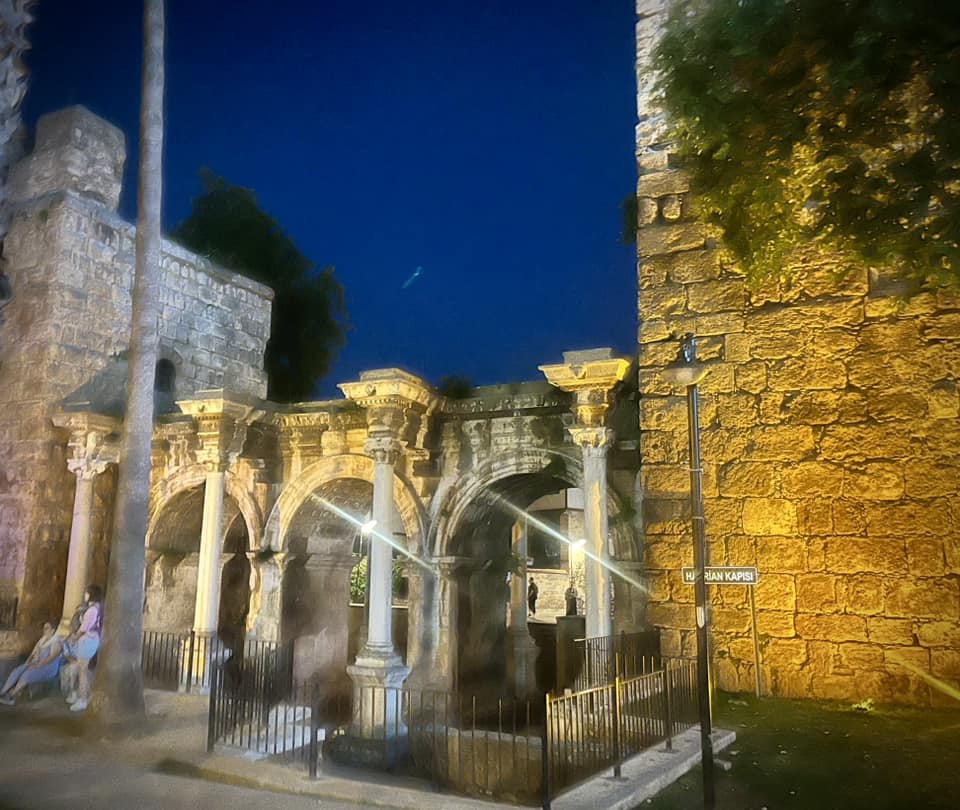
We came across the Kesik Minare (Broken Minaret), lit up at night.
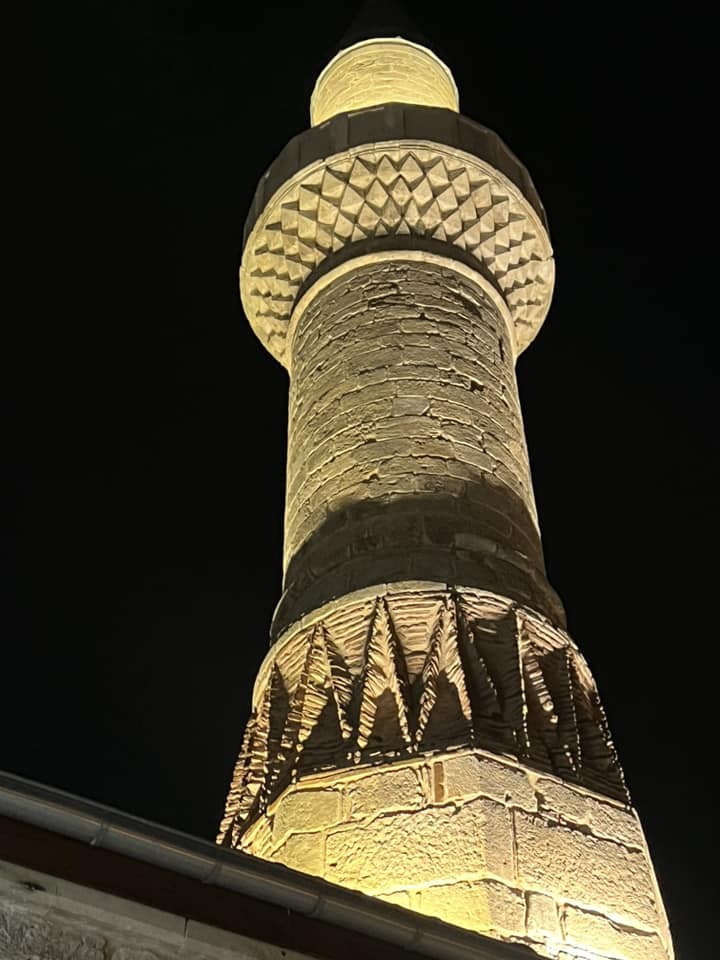
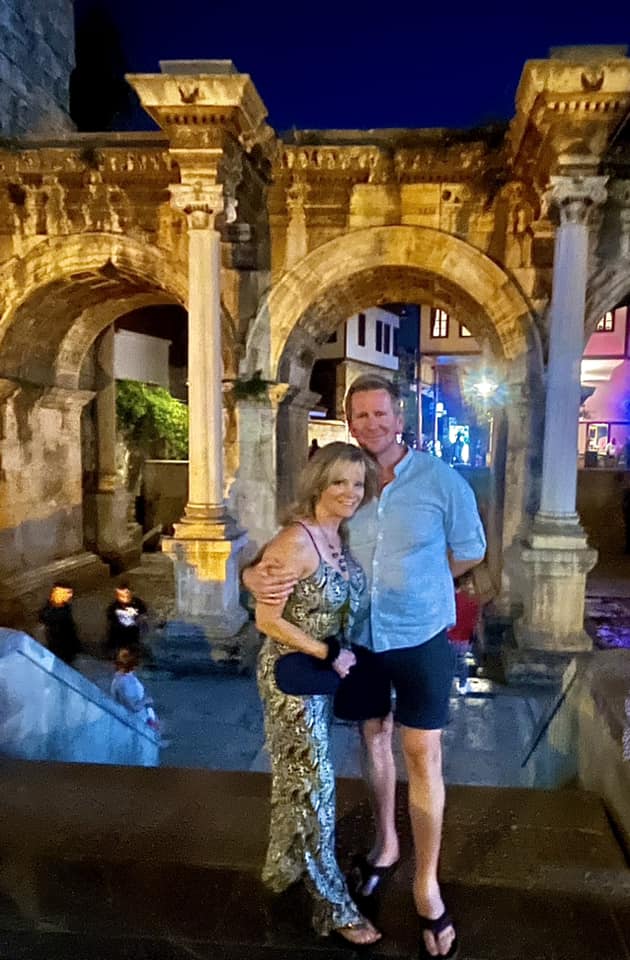
We walked down many steps to the illuminated harbor. For those less mobile, there is a glass elevator you can take.
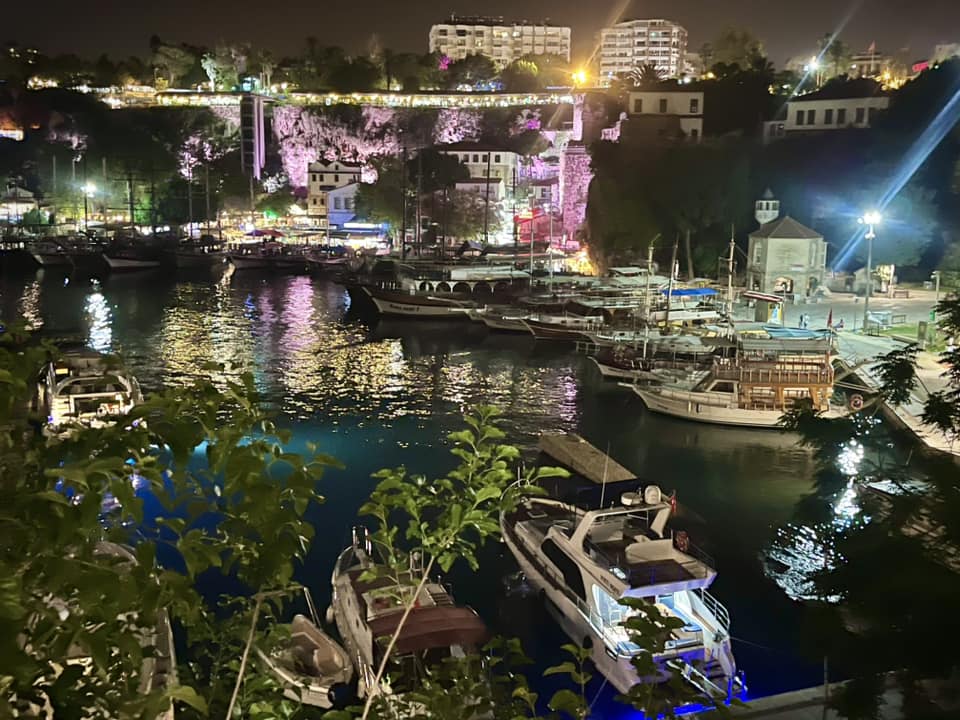
You’ll find many cats all over Turkey and the old town wasn’t an exception. The cats would wait outside the restaurants like this photo shows.
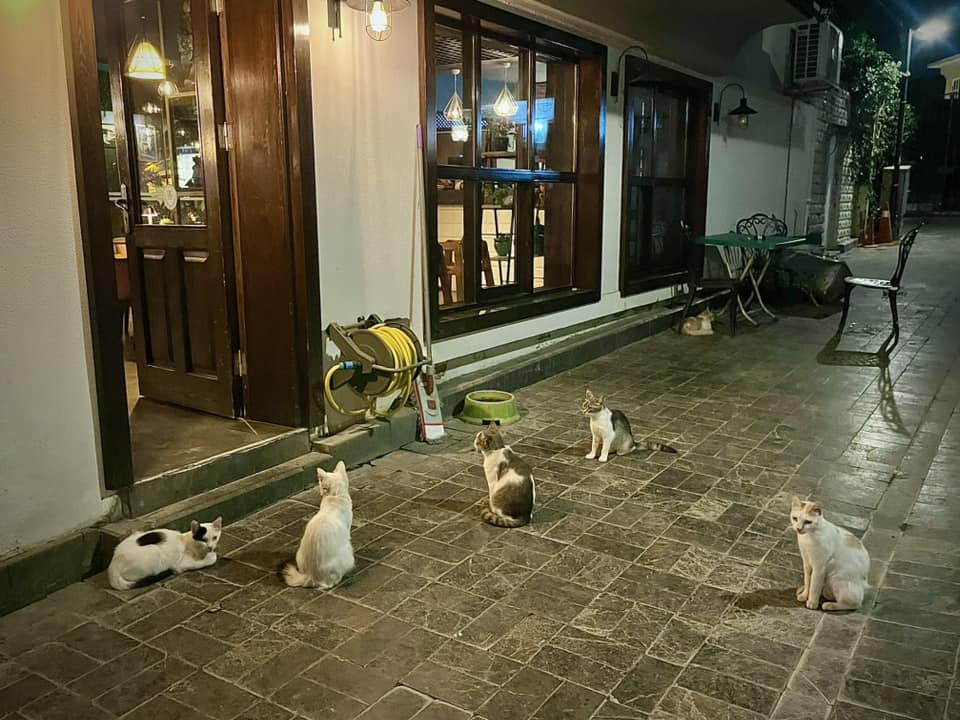
5th day / Antalya – Turkish Riviera
For those taking the optional extension of the tour, we headed south from Antalya to our resort on the beach. The location was between the towns of Belek and Alanya.
We had two stops along the way to visit a jewelry workshop and a leather manufacturer. One reason why the cost of these tours is less expensive is because the agency has a deal with local vendors. The tour cost is partially covered by the vendors in the expectation and hope that their clients will purchase items such as the jewelry and leather. You will read more about these kind of tours in my blog post ‘Tour Packages – Pros and Cons‘.
Our resort on the Turkish Riviera (called Meryan) was a 5-star hotel with an all-inclusive plan. We spent three nights here and were very happy with this selected hotel by the tour company.
6th and 7th days / Turkish Riviera
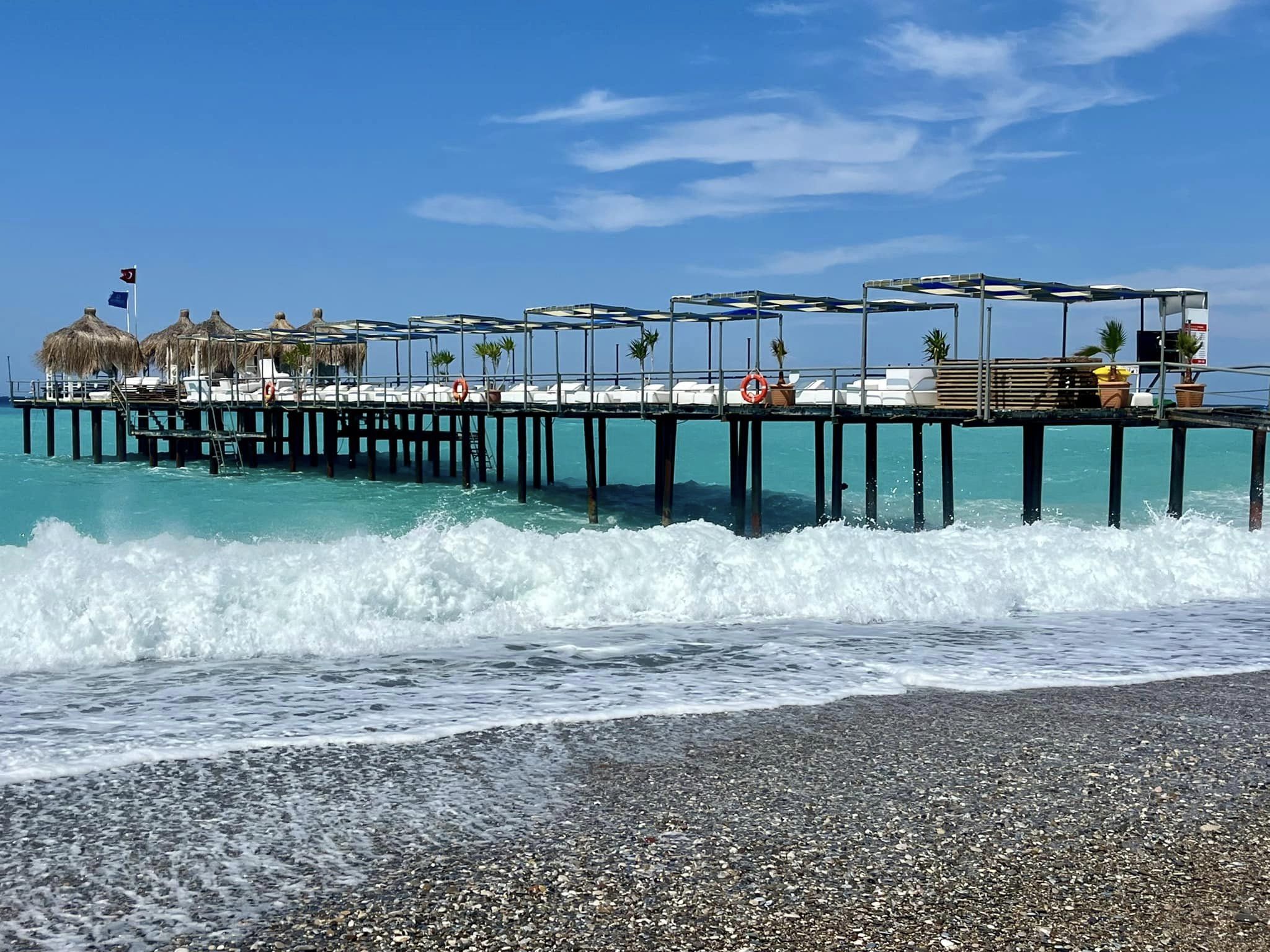
We were very happy with our resort on the beach. They had several pools and lounge chair on the beach. Nightly entertainment included shows, contests, and disco dancing. My friend and I took advantage of the pool aerobics and outdoor exercise classes. We also bought massage packages in their onsite spa.
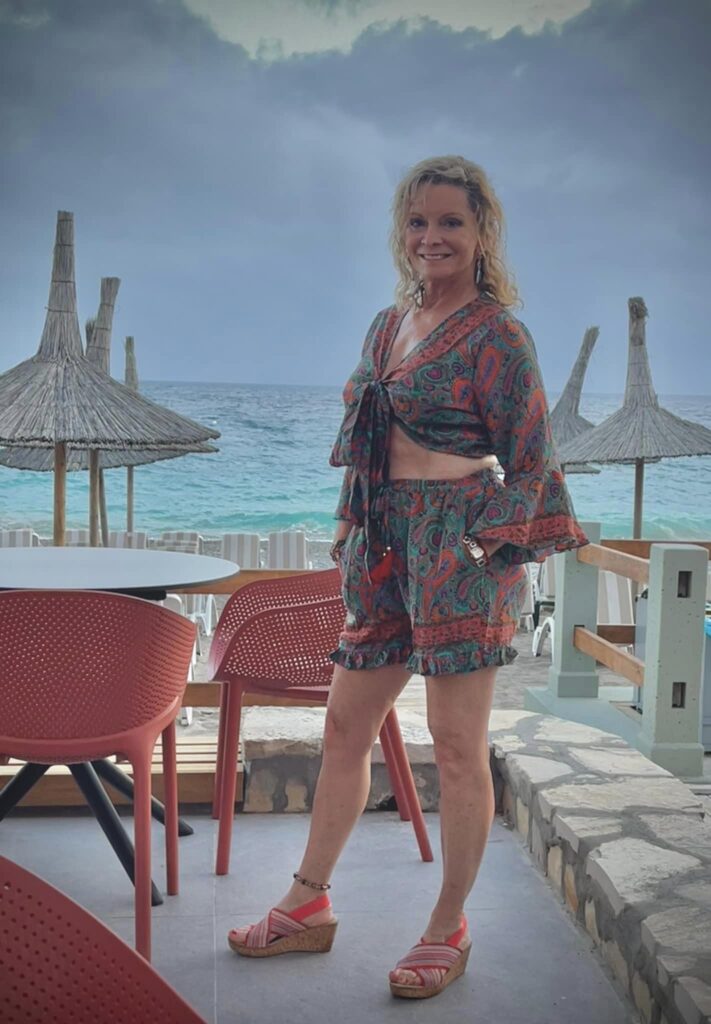
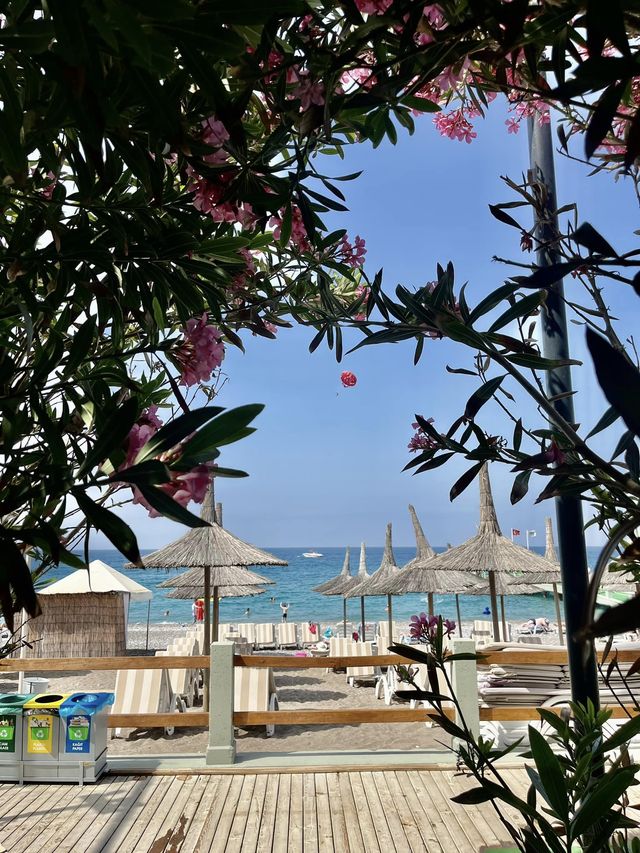
Spending this time on the beach made our trip perfect. After all the road time between Antalya and Cappadocia, we deserved some R&R time.
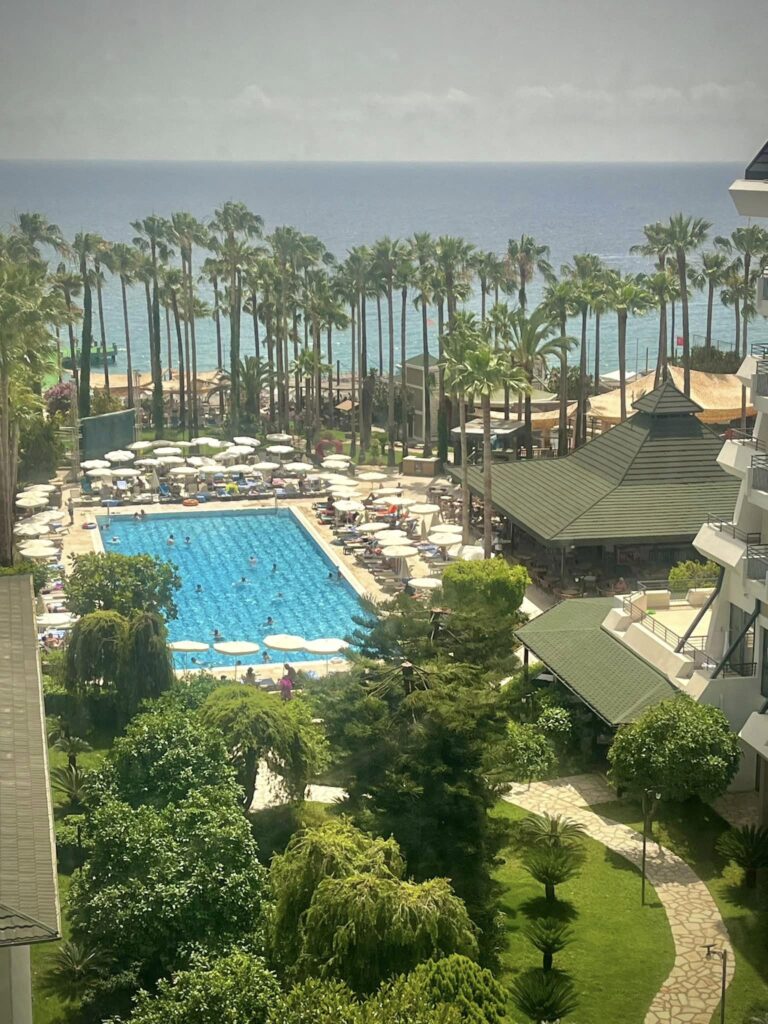
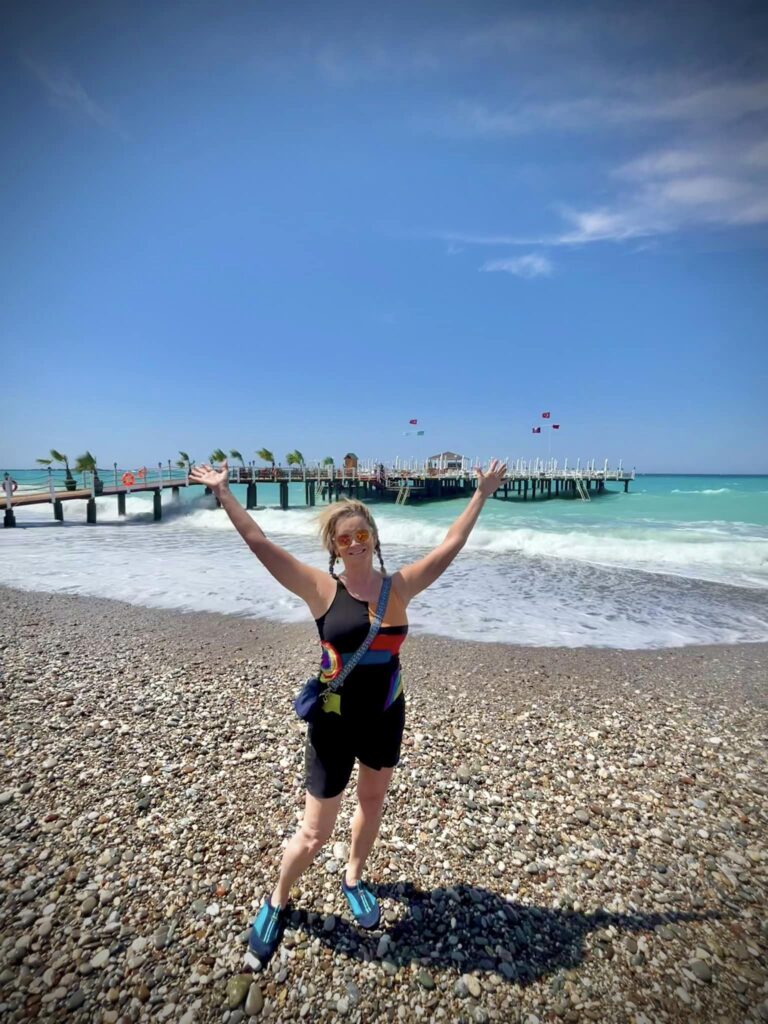
Because it was May, the water temperatures were a bit chilly for my liking. The rock beaches were walkable with special shoes. The outside temperature was perfect, around 25c/77f. We did have one windy day where they had to protect the docks and remove the beach chairs. It was crazy to see the high waves caused by the wind.
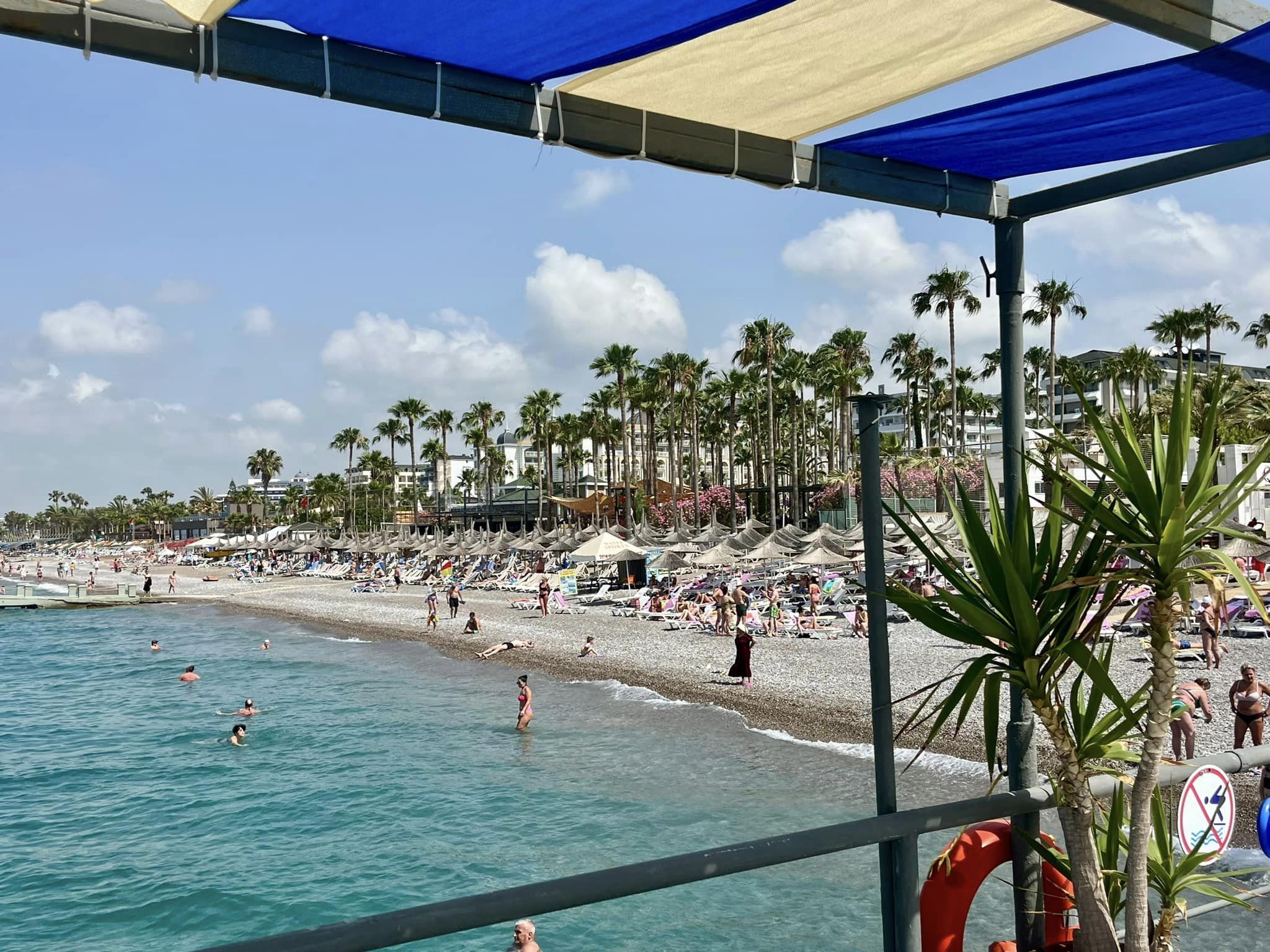
Summary
I hope you’ve enjoyed reading about my special time in Turkey and the Cappadocia Itinerary. It was a fantastic experience! Seeing the unique scenery of Cappadocia from the vantage point of a hot air balloon was an unforgettable experience. If you do one thing while in Cappadocia, book a hot air balloon ride and be totally amazed!
Click below image to save to Pinterest for future reference!
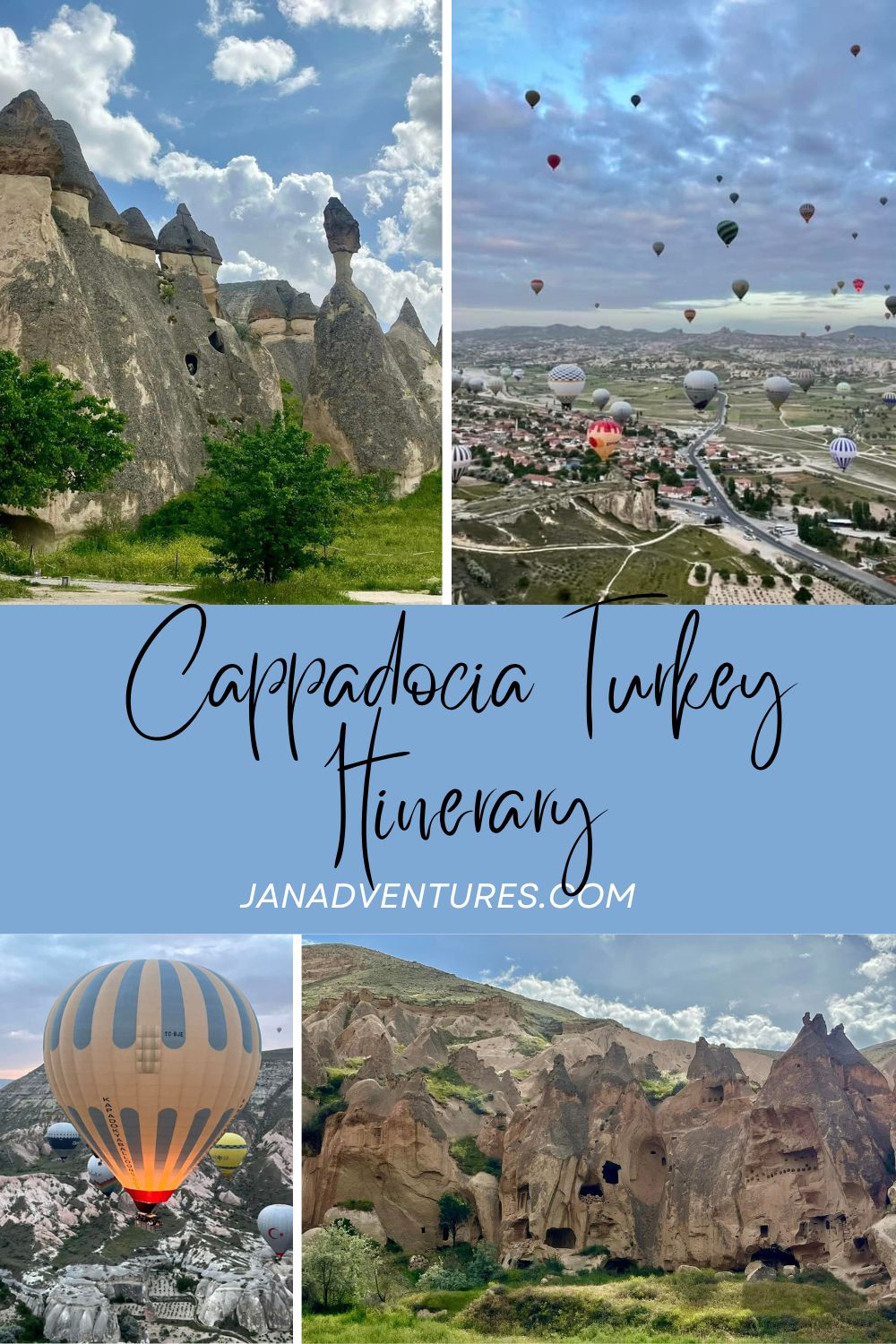
If you are interested in similar organized tours I’ve done with this company, see my below blog posts:
If you are looking for assistance to plan your next trip, I am here for YOU! I love to plan travel itineraries for myself and others. For more details on how I provide this service, please check out my Itinerary Planning page and drop me a quick email at jan@janadventures.com to get started!


